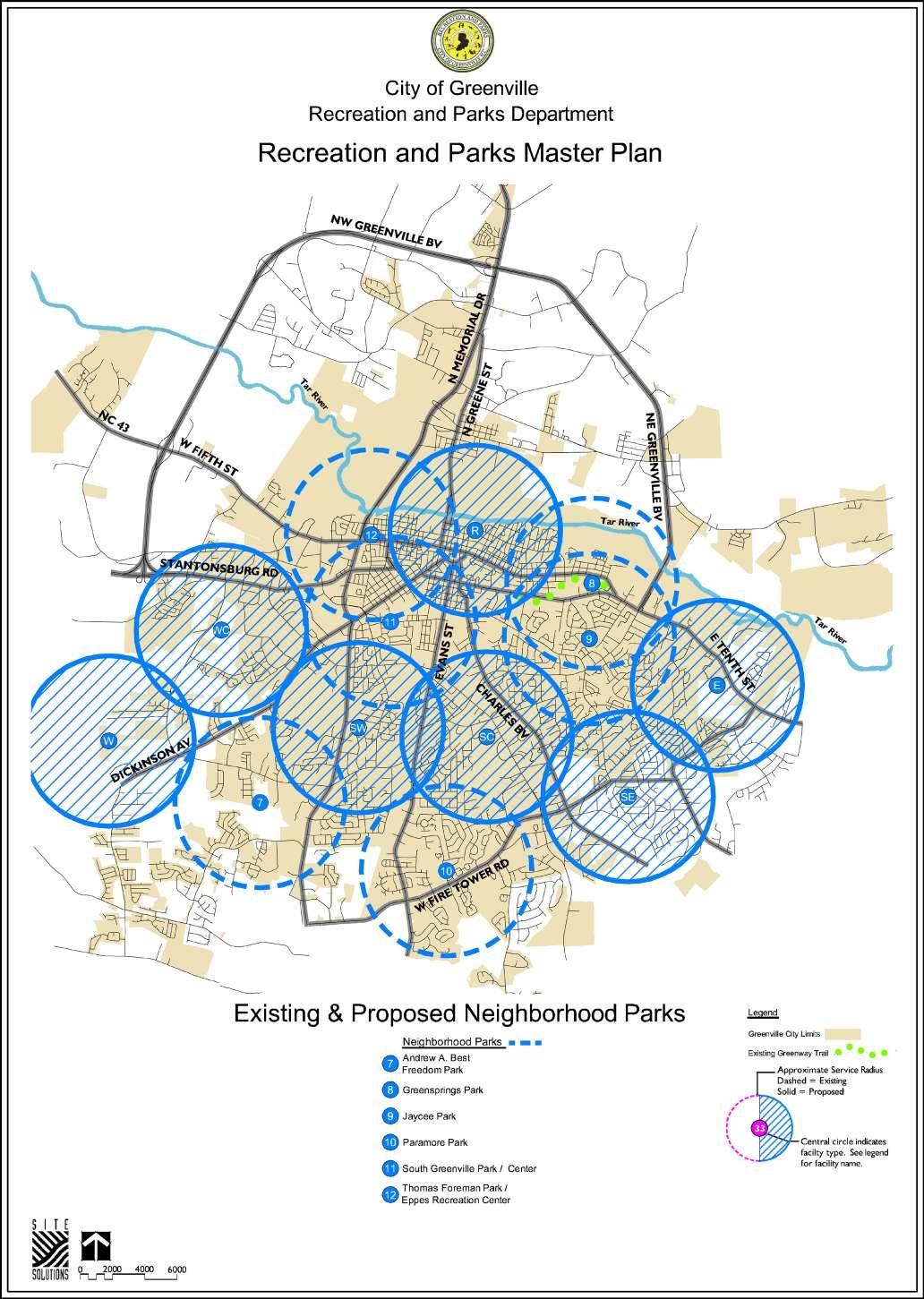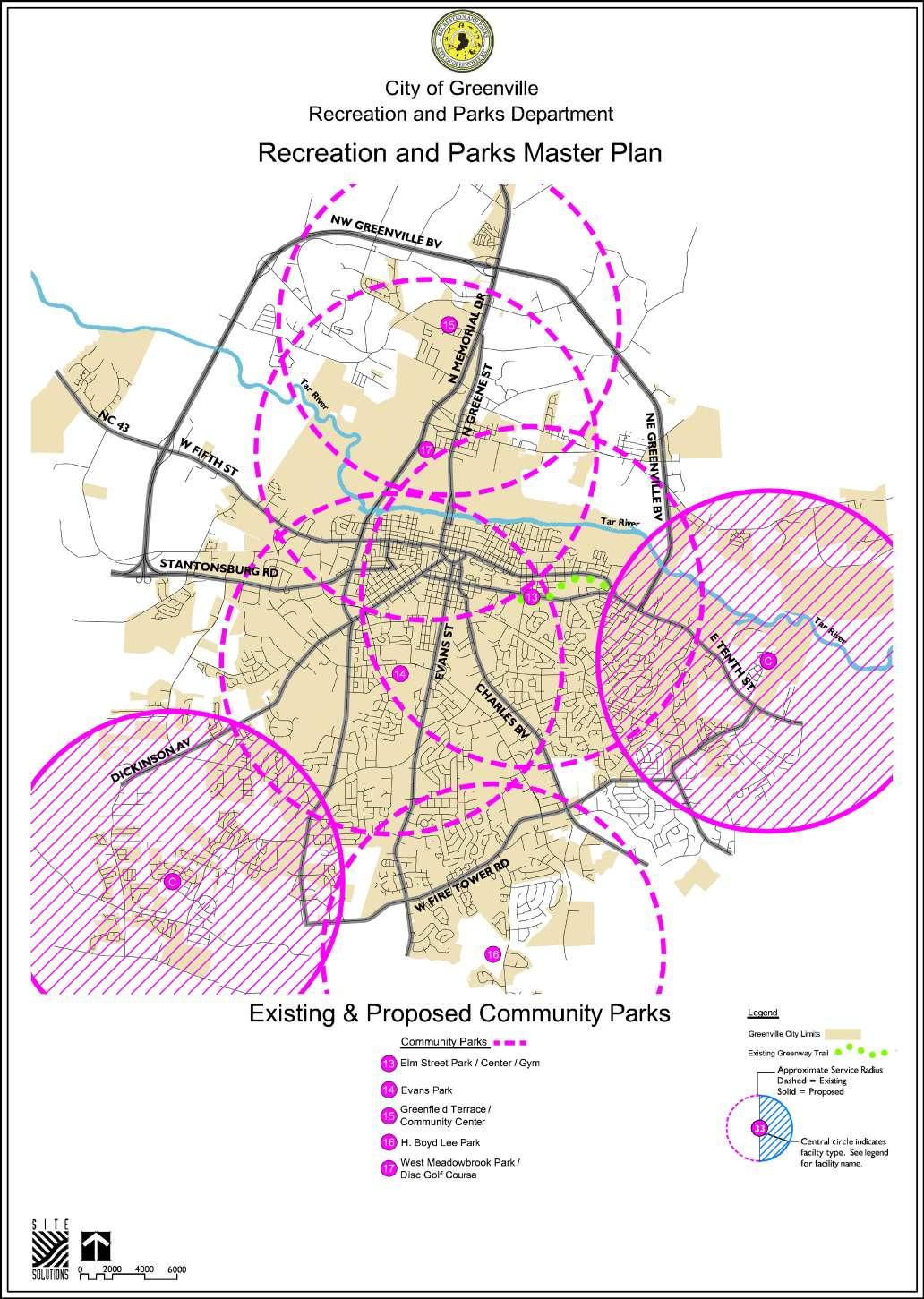Comprehensive Recreation and Parks Master Plan


City of Greenville

Recreation and Parks Department
Adopted: November 6, 2008



City of Greenville

Recreation and Parks Department
Adopted: November 6, 2008
City of Greenville City Council
Patricia C. Dunn, Mayor
Mildred A. Council, Mayor Pro-Tem
Rose H. Glover, District 2
Larry Spell, District 3
Calvin Mercer, District 4
Max Joyner, Jr., District 5
Bryant Kittrell, At-Large
Wayne Bowers, City Manager
Thomas Moton, Jr., Assistant City Manager
Recreation and Parks Commission
Jimmy Bond, Chairman
Sandy Steele, Vice-Chair
Sue Aldridge
Bill All
Wilbur Bennett
Jerry Clark
Gary Hassell
Wilson McDowell
Freddie Outterbridge
Larry Spell, City Council Liaison
Recreation and Parks Department
Gary Fenton, CPRP, Recreation and Parks Director
Shana Kriewall, CPRP, Superintendent of Recreation
Mark Gillespie, Superintendent of Parks
Park Planner
Derek Williams, Site Solutions
704-521-9880
www.sitesolutionspa.com
Greenville is rapidly becoming one of North Carolina’s leading urban centers. Located in North Carolina’s eastern coastal plain, the city enjoys a favorable climate, a beautiful rural landscape, and a community filled with southern warmth and hospitality. Add to that the educational and medical advantages of East Carolina University and Pitt County Memorial Hospital, and you have a community that is a regional attraction. As the community grows and urbanization takes place, it is very important that the City is prepared to provide adequate parks and recreation facilities for its citizens and visitors.
In 2000, the City developed a Recreation and Parks Comprehensive Master Plan. This plan identified park needs through the year 2020. Much has changed in the eight years since the 2000 plan was completed. The purpose of this comprehensive plan is to update the 2000 Comprehensive Plan by assessing the changes that are occurring, initiating a public discussion on future park needs, and establishing standards for future park development. Utilizing these standards, the master plan proposes a Plan of Action for achieving current and future needs. The following master plan document gives the Recreation and Parks Department a road map for the future development of its recreation and park system.

The most important aspect of the planning study was identifying the public’s desire for parks and recreation facilities. The public was offered the opportunity to participate in this planning effort through:
•
A series of three public meetings
• interviews with local residents
A countywide survey that included telephone
• community stakeholders
One-on-one interviews with over a dozen
Working closely with the Recreation and Parks
• Department staff to better understand public needs
In addition to gathering public input, a critical step in developing this plan is understanding the demographic and population changes that are occurring in the area. One of the most significant changes that has occurred since the 2000 plan is the City’s growth projections. The 2000 Comprehensive Plan used a 2020 population projection of ± 86,000 as its planning guide. In the past eight years, the city’s population growth has changed significantly. Today, the City’s Community Development Department projects that the 2020 population will be 106,000. Based on this projection, the City’s Recreation and Parks Department must plan for an increase of over 30,000 new park users over the next twelve years.
As described in Section Three “Recreation Standards and Needs Assessment”, a park system is typically comprised of eight park types. These park types include:
•
Community Parks
•
• Sport Complexes
• Greenways
Regional Parks
•
•
•
School Parks
Special Use Facilities
Each of these park types provide recreation opportunities that meet residents’ recreational needs. In order to meet the growing needs of its expanding population, the City will have to make improvements to each of these eight park types.
Mini parks are the smallest of the park types. These parks typically range in size from one-half acre to four acres and provide a limited range of activities (playground, picnicking, walking, etc.). Greenville’s park system has six existing mini parks (Belmont/ Dream, Hillsdale, Peppermint, Tobacco Road, Westhaven, and Woodlawn). As part of the public input process, many people expressed a desire for easily accessible “walk to” parks. With this expressed demand, this plan recommends the City develop fourteen additional mini parks during the planning period. Some of these mini parks may be constructed as part of the subdivision development process as new neighborhoods are built.
Neighborhood parks play an important role in providing both active and passive recreation in a community. Preferably in the ten to fifteen acre range,
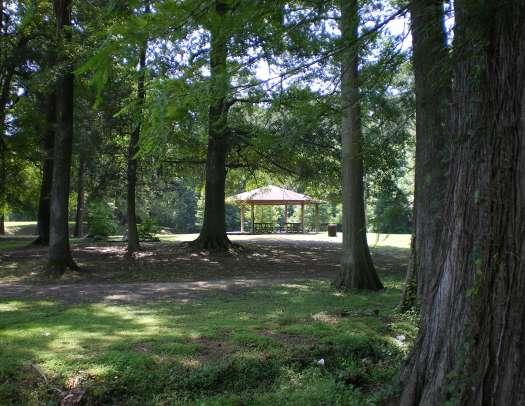
these parks are large enough to provide programmed space (ballfields, play courts, playgrounds, etc.) and still provide some areas for open space (wooded or open). Generally, neighborhood parks have a onehalf mile service radius, locating them one mile apart.
Currently Greenville provides its citizens six neighborhood parks (Jaycee, Greensprings, Paramore, South Greenville, Thomas Foreman, and Andrew A. Best Freedom Park) on approximately seventytwo acres of parkland. By 2020, the City should construct seven additional neighborhood parks. These neighborhood parks should be located in underserved areas throughout the eastern, western, and southern areas of the city. In addition, a neighborhood park should be developed on FEMA buyout property south of the river, adjacent to the City’s new Off-leash Dog Area.
Two of the City’s existing parks (Thomas Foreman and South Greenville) should be improved. Master plans should be developed for each of the new and renovated parks.
Community parks are the foundation of most municipal park systems. At a size of 25 – 75 acres, these parks are large enough to provide a variety of active recreation facilities (ballfields, court games, etc.), and allow portions of the site to remain undeveloped, providing valuable open space.
The City has five existing community parks covering approximately two hundred acres. These parks (H. Boyd Lee, Elm Street, Evans, Greenfield Terrace, and West Meadowbrook) provide a large percentage of the Department’s park and recreation facility offerings. By 2020, there will be a need for two additional community parks. The City’s property on 10th Street Extension (Highway 33) would make an ideal community park. Based on the public’s very strong support for developing a park at this location during each of the public meetings, it is recommended this property be developed as the City’s next community park. A second site for a community park should be acquired in the southwest area of the city.
Several of the City’s existing community parks are underutilized. In addition to the development of these two new community parks, the City should develop master plans for Greenfield Terrace and West Meadowbrook Parks to determine how these parks might be improved to provide more recreation opportunities to the citizens in their service area.
Sports complexes are a new recreational park type that focus on active recreation with particular emphasis on team sports (soccer, baseball, etc.). Typically, the sports complex is a large park (80 –100 acres) dedicated to league and tournament play. Often these events provide opportunity for economic development. Currently the City has three facilities that function as mini sport complexes (Bradford Creek Soccer Complex, Guy Smith Park, and Perkins Baseball Complex). Unfortunately, all of these facilities are extremely small by today’s standards for sports complexes.
While there does not appear to be a need for the City to develop a new sports complex, there is a need for additional ballfields. Likewise, there is considerable interest by both the Department and by GreenvillePitt County Convention and Visitors Bureau to develop athletic fields for tournament play. With this understanding, the Department should consider the development of athletic fields (of all types) in the City’s proposed community parks and at existing community parks that have adequate land for field expansion (H. Boyd Lee, Greenfield Terrace, and West Meadowbrook).

Greenville has an outstanding regional park in River Park North. In addition to this facility, the City has an opportunity to develop a second regional park on the Phil Carrol property. Both of these park sites have wonderful settings for passive recreation with access to the river. River Park North currently provides a variety of passive recreation opportunities, but has even greater potential with the recent acquisition of additional park acreage. In order to maximize the public benefit of this wonderful property, a park master plan should be developed for this park. This master plan should include a feasibility study linking the downtown area (Town Common) and River Park North with a pedestrian connection (bridge, ferry, etc.).
The Phil Carrol property has great potential for passive recreation, but is currently undeveloped. A park master plan should be developed for this property to determine park improvements that will allow public access to this beautiful site, with minimal environmental impact.
The second component of a needs assessment is a review of existing facilities within each of the park types to determine if there are adequate recreational facilities (ballfields, playgrounds, etc.) to meet demand. This needs assessment begins by establishing population based standards for facility development. The 2000 Recreation and Park Comprehensive Master Plan established standards of

development for most types of recreation activities. A review of these standards by staff and the public at the public meetings resulted in a few changes from the standards established in 2000. These changes were not significant. The new standards for facility development are listed on Table 3-3, Standards for Public Facilities. The slight reduction in several of the recreational activities was offset by the larger projected population for 2020 (see Section Two).
As illustrated in the table below, most all recreation activities have some facility needs. With a population increase of over 30,000 by 2020, there will be significant facility needs in many recreation activities.
The majority of these facility needs can be met with improvements to existing parks, and the development of the two community parks, seven neighborhood parks, and fourteen mini parks that are recommended for development over the next decade.
In addition to the basic park types described above, a park system should also provide users with a variety of special use facilities. During the public input process (survey, public meetings, and interviews), much attention was given to the importance of special use facilities. These facilities include:
Currently Greenville offers its citizens two swimming pools (City Pool at Guy Smith Park and the pool at the Aquatics and Fitness Center). Each of these pools has programming limitations. City Pool, which is the City’s outdoor pool, operates only in the summer. During the summer months, demand by day camp activities, swim practice, and water safety classes greatly restrict the availability of the pool for free swim. Likewise, the pool at the Aquatics and Fitness Center, in addition to being limited to members, is programmed for the majority of the time. With these highly programmed pools limiting free play, there is a need for an additional pool in the City.
Another way to improve Greenville’s aquatics offerings is to develop community spraygrounds. These water play areas are one of the nation’s most popular answers to the need for water play. While not a true swimming pool, spraygrounds provide a fun filled water play experience without the development and operational costs of a swimming pool. By developing several spraygrounds strategically around the city, the need for building additional swimming pools is minimized.
Finally, there was much discussion during the planning process regarding the development of a competition level aquatic facility in Greenville. Currently there is an effort to bring a coalition of agencies (Pitt County Schools, City of Greenville, University Health Systems of Eastern North Carolina, and others) together to develop a world-class
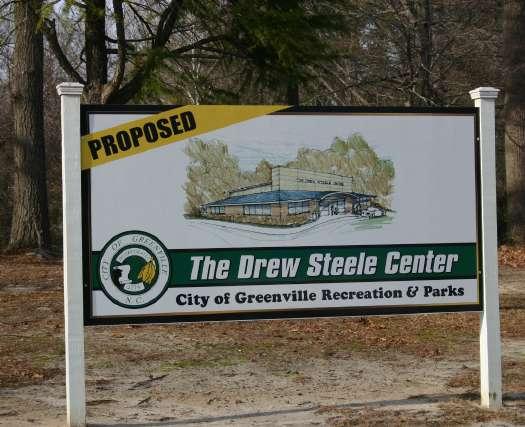
aquatic center to accommodate a competitive level swimming program. While the City probably will not take the lead in this initiative, this type of facility offers programs and economic impact benefits to the community. The City should consider being a participant in this initiative if it takes flight.
The City of Greenville currently operates six gymnasiums (Elm Street, Eppes, South Greenville, H. Boyd Lee, Aquatic/Fitness Center, and Sports Connection). Most of these gyms are either extremely old and need major improvements, or operated as a fee based facility (Aquatics and Fitness Center and Sports Connection); therefore, while the number of gymnasiums appears to be adequate, availability/ function of the gymnasiums is limited.
The City should make major renovations to their oldest gymnasiums. There is a plan underway to convert the Elm Street Gymnasium into the Drew Steele Center. The proposed improvements for this gymnasium will greatly enhance its community use and should be undertaken. Like the Elm Street Gymnasium, the gymnasiums at the Eppes Center and South Greenville Park are extremely old and need major renovations as well. Plans for building improvements/expansion should be developed for both these facilities. Finally, while not an old facility, H. Boyd Lee Recreation Center will experience increased demand as the City continues to grow in that area. The master plan for
this building calls for the future expansion of the gymnasium to allow another basketball court. This plan should be considered in the later part of this planning period.
In addition to making major improvements to these four recreation centers/gymnasiums, the increase in Greenville’s population will likely warrant consideration of another recreation center/ gymnasium in the future.
Greenways are natural corridors often associated with streams and waterways that provide trails for pedestrians and cyclists. The community’s desire for the preservation of its rivers and creeks, as well as its desire for the development of greenways, was expressed in all of the public meetings and through the public survey.
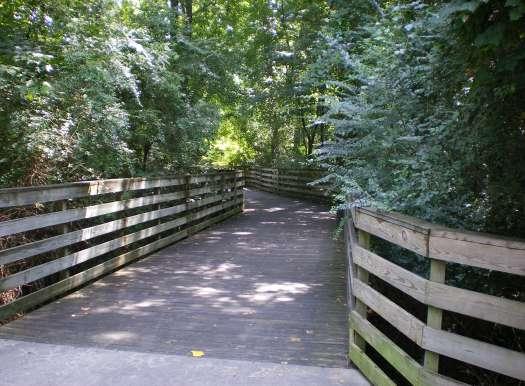
The City has already identified the importance of greenways through the development of the 2004 Greenway Master Plan. This plan identifies forty-two individual greenway projects, resulting in almost one hundred miles of greenway and sidewalk walking trails.
With the Greenway Master Plan in place, the City has the tool to begin greenway development. The capital improvements budget of this master plan includes over $5 million in acquisition and development funding for greenways. These funds should provide over ten
miles of greenway development and significantly more if the private sector could be encouraged to donate land for greenway development.
Many of the City’s parks and recreation facilities are over forty years old and repairs and/or improvements are needed. While the scope of this planning report does not include detailed master planning for any of the existing (or proposed parks), a list of parks needing improvements has been developed, and an order of magnitude cost for making the improvements has been established. See the Capital Improvements Plan (Table 5-1) for a list of proposed improvements.
Pitt County Schools operates over a dozen schools in the jurisdictional limits of Greenville. All of these schools contain some level of outdoor and/or indoor recreational facilities. Many of these facilities could provide recreational use to the citizens of Greenville during non-school hours. Likewise, the City’s Recreation and Parks Department offers a variety of recreation facilities that offer program opportunities that could enhance school curriculum.
Wherever possible, Pitt County Schools and the City of Greenville’s Recreation and Parks Department should work together to joint use facilities. This joint use approach should be considered in planning of the future schools and parks. The park school concept is an excellent avenue for saving tax dollars by sharing land, infrastructure, and facility development cost.
A number of recreation and park agencies within the Greenville area are at work to provide citizens with park and recreation opportunities. These agencies include:
• Recreation
•
•
Pitt County Schools/Community Schools and
Farmville Recreation and Parks Department
Winterville Recreation and Parks Department
All of these agencies should work to maintain open lines of communication with other parks and recreation providers in the area. Through open communication, duplication and competition can be minimized and programs strengthened.
The development of over twenty parks, miles of greenways, and several special use facilities will require a significant financial commitment from the City over the next twelve to fifteen years. The Capital Improvement Budget required to fund the recommendations found in this master plan includes:
Section Four (Proposals and Recommendations) and Section Five (Action Plan Implementation) provide greater details on improvements included in this Capital Improvements Budget and strategies for funding the recommendations made as part of this master plan.
The City of Greenville Recreation and Parks Department offers the citizens of Greenville and the surrounding area a system of twenty-nine parks on 1,267 acres of land with many unique special use facilities (municipal golf course, indoor baseball training facility, tennis center, etc.). Through this diverse system of parks, citizens are offered a variety of active and passive recreation opportunities. In addition to the recreation opportunities, these valuable assets provide open space and environmental benefits to the rapidly urbanizing community.
This section provides a detailed inventory of the Department’s parkland and recreational facilities. Inventorying these existing facilities is the first step in developing a plan for the future.

Comprehensive Recreation and Parks Master Plan
A 2 acre mini park located in the northwestern section of Greenville, Belmont/Dream Park contains a playground.
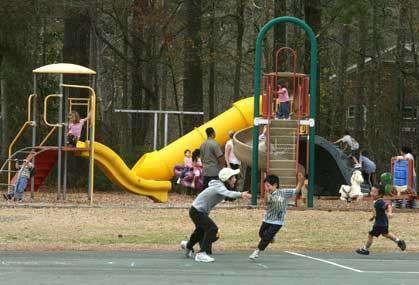
A 0.7 acre mini park located on Sunset Avenue in the southern section of Greenville, Hillsdale Park contains a picnic shelter and playground.
A 1.5 acre mini park with playground and picnic shelter. This park is well used by both children and adults.
A small mini park located in the western section of Greenville, Tobacco Road Park contains a playground.
A 1.67 acre mini park in southern Greenville. This park contains a playground, picnic shelter, and open space.

WoodlaWN Park
A 0.6 acre mini park located at Woodlawn Avenue and Willow Street close to the Tar River. This park provides an ADA accessible playground, picnic shelter, volleyball court and outdoor basketball court.

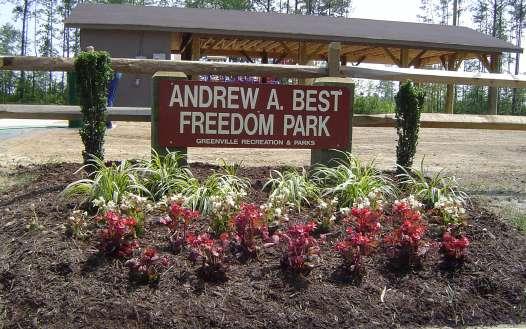
aN dre W a . b est
f reedo M Park
This 6 acre neighborhood park is located in south Greenville on Oakdale Road. Facilities include a playground, picnic shelter, multi-purpose field with backstop, restrooms (180 S.F.), and open space. A second phase of this park is currently planned.
Playground
Picnic Shelter
Multi-purpose Field
Gree N field t errace Park
b arnes- e bron- t aft c ommunity c enter
A 27 acre community park located in the northern section of the city, Greenfield Terrace Park offers both indoor and outdoor recreation opportunities. Outdoor facilities include a playground, picnic shelter, outdoor basketball, and an open play field. The Barnes-Ebron-Taft Community Center is a 3,040 S.F. multi-purpose building that includes a large meeting/community room with a warming kitchen. This building is used for family reunions, parties, and senior citizens events. During the summer, the park and building are used as a site for a day camp.
Community Center

Basketball Court
Playground
Picnic Shelter
Multi-Purpose Field
Gree N s P ri NG s Park
Greensprings Park is a 16 acre passive park that provides a trailhead for the Green Mill Run Greenway. The park is a very nice wooded site with a picnic shelter and grill. A small, unpaved parking lot provides users easy access to the greenway.
Picnic Shelter
Trail Head (Green Mill Run Greenway)
Parking
Jaycee Park
Jaycee Park is a 13 acre neighborhood park that provides active and passive recreation opportunities. It is also the location of several of the City’s speical use recreation facilities and the Department’s administrative offices.
The Center for Arts and Crafts is a facility for arts and crafts education and promotion. Combined with the City’s library, this facility is a true center for culture and education. For more information on the Center for Arts and Crafts, see the Special Use facilities in this inventory. Jaycee Park is also the site of the city’s Extreme Park (see Special Use Facilities).
Jaycee Park offers a venue for more traditional sports as well. The park has a lighted softball field, lighted tennis courts, a playground, and a picnic shelter. Its large open lawn areas with large shade trees provide a wonderful setting for other passive recreation activities.
Softball Field (Lighted)

4 Tennis Courts (Lighted)
Picnic Shelter

Playground

Extreme Park (Ramps) for Skateboards/
BMX Bikes
Inline Hockey Rink
Center for Arts and Crafts
A 15 acre neighborhood park in southern Greenville. This park contains a playground and picnic shelter with access to the Fork Swamp Greenway.

Playground
Picnic Shelter
s outh Greenville r ecreation c enter
One of Greenville’s first recreation facilities, this 12 acre park and recreation center offers a variety of indoor and outdoor recreation opportunities. The South Greenville Recreation Center is a 14,744 S.F. community center/gymnasium offering a weight room, meeting rooms, and computer lab. Outdoor facilities include a youth baseball field, picnic shelter and a playground.
Improvements have been made to the recreation center in the past year to create computer labs and improved fitness areas. Additional improvements to the building and park are needed.
A master plan for both building and park improvements should be developed for this facility.
Gymnasium/Recreation Center
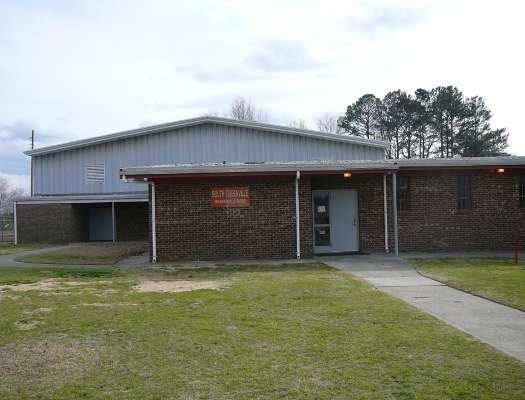
Youth Baseball Field
Multi-purpose Field
Playground
Picnic Shelter
tH o M as f ore M a N Park
e ppes r ecreation c enter
Thomas Foreman Park and Eppes Recreation Center provide both indoor and outdoor recreation activities in a facility that has a long history of serving the citizens of Greenville. The park and recreation center was developed on the former campus of the C.M. Eppes High School.
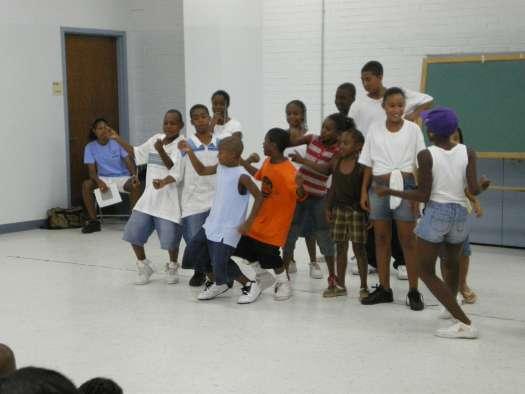
The park site, covering 10 acres, contains a youth baseball field, two (2) tennis courts with lights, two (2) picnic shelters, and a playground. The youth baseball field is used by the Jackie Robinson League. The picnic shelters and playground are used for family reunions and special events, as well as support facilities for the ballfield.
The Eppes Recreation Center utilizes portions of the original high school building (including the gymnasium) and provides several meeting/activity rooms that have been added. Currently the 24,260 S.F. building includes a multi-purpose room (used for senior activities), an activity room, weight room, and gymnasium. Locker rooms, restrooms, and offices provide support space. The center serves as a site for the Police Athletic League (PAL).
Several renovations/expansions have been made to the original building, but improvements are still needed. This facility is an important part of the neighborhood, and reflects much of Greenville’s history. Redevelopment and improvements to both the Eppes Recreation Center and Thomas Foreman Park should be a priority. A master plan study for both the building and park should be undertaken to determine the best use.
Recreation Center/Gymnasium (24,260 S.F.)
Youth Baseball Field
2 Tennis Courts with Lights
2 Picnic Shelters
Playground

One of Greenville’s newest facilities, this 92 acre park offers both indoor and outdoor recreational activities. The center of the park is a ± 16,500 S.F. gymnasium/recreation center that offers a full gymnasium and two (2) meeting rooms. This facility also provides offices for Greenville Recreation and Parks Department athletics staff. The park includes a tournament level softball complex with three (3) lighted fields, a 626 S.F. scorers tower with concession stand, and outdoor restrooms (660 S.F.) Other outdoor recreation facilities include a playground, picnic shelter, walking trails/exercise station, and the City’s only cricket pitch. The park has been designed to allow expansion of the gymnasium and athletic fields. Currently several of these expansion projects are on the Department’s five year capital improvement plan. Located in south Greenville on Corey Road, the H. Boyd Lee Park provides a valuable park and recreation facility to Greenville and Pitt County residents.

2 Meeting Rooms
3 Softball Fields with Lights (320’)

Picnic Shelter
Playground
Walking Trail/Cross-country Course
Walking Trails with Exercise Stations
Cricket Pitch
One of Greenville’s oldest and most used parks, Elm Street Park provides both indoor and outdoor recreation opportunities. The park is divided by Elm Street. The western section of the park (13 acres) contains the Elm Street Gym, an aging facility that has served the City of Greenville for many decades. The Elm Street Gym is a 14,500 S.F. building with a gymnasium with two (2) full basketball courts and meeting space on a mezzanine level above the courts. Plans for significant renovations to this building have been developed as part of the Drew Steele Center project. In addition to the recreation center, the western portion of the park includes a

picnic shelter, lawn games (4 horseshoe, 6 shuffleboard and bocce courts) and portions of the Green Mill Run Greenway.
The eastern portion of the park (8 acres) is dedicated to outdoor recreation, with an emphasis on youth baseball. This area of the park includes a tournament level youth baseball field, a “Field of Dreams” youth baseball field for special populations, six (6) lighted tennis courts, and a community center. The Elm Street Center is a 4,800 S.F. multi-use building with office space and classrooms. This area also includes two play areas; one of the playgrounds, identified as the CommonGround Playground, provides a barrier-free play environment. Park support facilities include three (3) picnic shelters, two (2) playgrounds, and a restroom/concession stand.
Recreation Center/Gymnasium(14,500 S.F.)

Community Center (4,800 S.F.)
Youth Baseball Field
Field of Dreams
6 Tennis Courts (Lighted)
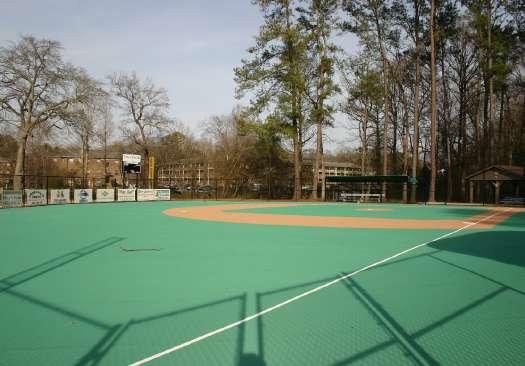
4 Picnic Shelters
2 Playgrounds/CommonGround Playground
Lawn Games
Trails
Restroom/Concessions Building
e va N s Park
r iver b irch t ennis c enter
Evans Park is a 24.5 acre community park that provides active recreation as well as public open space. Facilities include two (2) lighted softball fields, twelve (12) lighted tennis courts, the River Birch Tennis Center (see special use facilities), and restrooms. The softball fields are predominately programmed with co-ed softball use. Pop Warner football practices on the softball field. The park also includes an archery range.
2 Softball Fields (275’/280’)(Lighted)
12 Tennis Courts (Lighted)
Archery Range
Restroom Building
This 33 acre community park provides a variety of active and passive outdoor recreation opportunities. Facilities include a soccer field, youth baseball field, and a softball field.
A playground, picnic shelter, and restrooms provide additional activity and support facilities. West Meadowbrook Park is also the site of the City’s 18hole disc golf course.

West Meadowbrook Park has the potential for development of additional facilities. A master plan should be developed for this park.
Soccer Field
Youth Baseball Field
Softball Field (Lighted)
Playground
Picnic Shelter
Restroom
Disc Golf Course
A truly unique natural open space covering 448 acres along the Tar River, this park is primarily for passive recreation and environmental education. The park, which contains five (5) natural ponds and over 1.5 miles of river frontage, offers visitors a wide variety of opportunities to enjoy the unique natural features found in this riverine environment. Facilities include gravel walking trails (approximately one mile), two (2) picnic shelters, volleyball, and horseshoe courts. Water access is facilitated by a fishing dock, observation decks, canoe launch, boat ramps, and several primitive campsites. Support facilities include outdoor restrooms (234 S.F.), boat shed (240 S.F), and a park maintenance building (2,125 S.F.).
The “jewel” of River Park North is the Walter L. Stasavich Science and Nature Center. This 10,500 S.F. nature center is dedicated to environmental education and provides visitors with a small theatre/ auditorium, large display area with live and mounted animal exhibits, a 10,000 gallon aquarium, displays, and a “hands on” turtle area. A separate classroom offers opportunities for educational classes and special event rentals. A small gift shop sells educational items and nature center memorabilia.
The Nature Center is open to the public six days a week and generates some of its operational expense through a small admission fee ($1 - $2), fees for classes, and sales in the gift shop. The center is a favorite of school groups, scout groups, and civic organizations.
Gravel Walking Trails (approximately one mile)
2 Picnic Shelters


Volleyball Court
Horseshoe Pit
Restrooms
Boat Shed
Park Maintenance Building
Three Campsites
Water Access
Fishing Dock
Observation Decks
Canoe Launch
The Bradford Creek Soccer Complex is a 26 acre sports complex dedicated to soccer. The complex provides five (5) regulation soccer fields (two of which are lighted) and one practice field. A small (240 S.F.) storage building provides space for some equipment storage. Currently support facilities are limited, but plans are underway to construct restrooms at the complex.
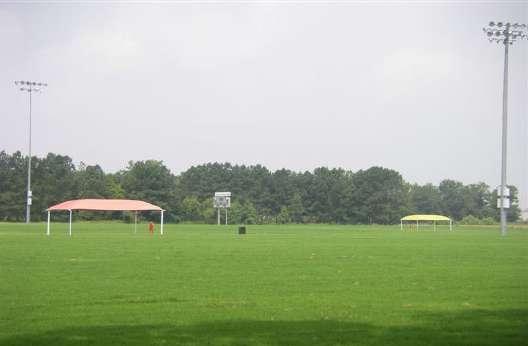
Practice Field Storage Building
A center for active outdoor recreation, Guy Smith Park is a 13 acre sports complex offering a variety of special use facilities with a focus on baseball and swimming. The Guy Smith Stadium, originally the home of the Greenville Greenies, provides covered seating, as well as over 9,100 S.F. in restrooms, lockers, meeting room, and storage space. This baseball facility provides a field with a “big league” feel.
The swimming pool at Guy Smith Park is Greenville’s only outdoor pool. This facility provides both a lap pool and diving well. A 3,100 S.F. pool building provides restrooms/changing areas, offices, and concession stand. The pool is used for day camps, lifeguard training, and free swim. Improvements to the pool building would improve operation and provide a more inviting facility to swimmers.

In addition to these special use facilities (swimming pool and baseball stadium), Guy Smith Park also contains a prep field and a youth baseball field. These fields are serviced by a 384 S.F. restroom/concession building.
Swimming Pool
Prep Field (Lighted)
Youth Baseball Field
Restroom/Concession

Perki N s b aseball c o MP le X
Perkins Baseball Complex is a 3 acre sports complex that provides game and practice facilities for Greenville Little League and other youth play. The complex is located adjacent to the Teen Center and the Sports Connection In addition to the youth baseball fields, the Perkins Baseball Complex contains a ± 2,700 S.F. restroom/concession/storage facility.

2 Youth Baseball Fields Practice Field
Batting Cage
Restrooms/Concessions/Storage Building
b eatrice Maye Garde N Park
Beatrice Maye Garden Park is a small greenspace with lawn areas, trees, and landscaped beds. No active or passive facilities are provided. The park is dedicated to Mrs. Beatirce Maye for her many years of civic duty to the City of Greenville.


Located along the Tar River, adjacent to the Downtown Business District, Town Common is Greenville’s most visible civic space. This large, beautiful downtown park space is considered “everybody’s park”. Town Common contains over 20 acres of open space for quiet reflection and passive recreation, as well as the perfect venue for city wide special events and concerts. Amenities include a river esplanade, walking trails, a 3,600 S.F. amphitheatre, a millennium sundial, and boat access.
The Town Creek Bridge will create a pedestrian connection to the South Tar Greenway and adjacent Town Common
neighborhoods. Recently purchased land at River Park North gives the City control of land on both sides of Tar River in this area. A pedestrian bridge or boat connection across the Tar River at Town Common would create a valuable link between the downtown business area and the trails and natural areas of River Park North. Current discussions regarding the revitalization of the downtown area could result in changes to the Town Common. A downtown planning study will provide a master plan for this park.
b radford c reek Golf c ourse
Bradford Creek is an 18-hole golf course covering 282 acres north of the Tar River. This public course offers a challenging golf experience for both the novice and the experienced golfer. Based on tee configuration, the golf course yardage ranges from 5,124 yards to 7,151 yards. The driving range, which was recently lighted, provides an excellent practice facility and generates additional income. A proposed housing development that will construct houses along several of the course’s fairways will enhance the area and significantly change the character of the course. Developers of the neighborhood are offering club/green fee discounts to those purchasing homes.
The Bradford Creek Clubhouse (8,000 S.F.) is a full service clubhouse facility. In addition to a pro-shop and locker rooms, the clubhouse provides a kitchen that offers a limited menu to golfers during the spring, summer, and fall. Improvements to the clubhouse to provide better operations should be considered. One proposed improvement project should be the construction of a golf cart storage barn.
The operation of Bradford Creek Golf Course should continue to strive to increase revenues through marketing efforts and careful management of facilities. In addition, the Department should look for ways to add features, such as the recent lighting of the driving range, to increase revenue.
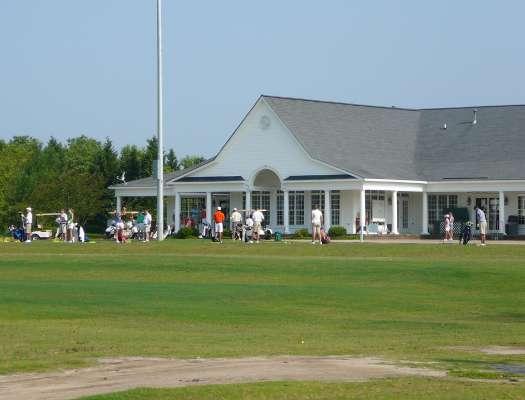
The Center for Arts and Crafts provides functional classroom/studio space for a variety of art activities. The center includes a small auditorium/stage for plays, dance recitals, etc., as well as studio space for ceramics, painting, sewing/weaving, photography, calligraphy, and book making. Activities include classes, camps, and workshops for youth and adults. The Center for Arts and Crafts is located adjacent to the administrative office of the Recreation and Parks Department in Jaycee Park. Together these two components contain over 11,000 S.F. of office, meeting, classroom, and auditorium space located adjacent to the city’s library. A +/-1300 S.F. modular building located adjacent to the departmental offices provides office and classroom space.
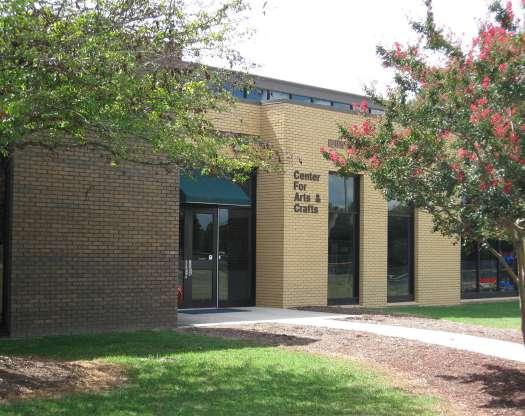
Extreme Park is a lighted facility that provides a cutting edge facility for skateboards and BMX bikes. In addition to a wide variety of ramps, the park provides an inline hockey rink for team play. This facility has been instrumental in making Greenville the center for world class BMX professionals. Many of these highly ranked professionals frequent extreme park.

Greenville’s first dog park, this park facility has found immediate popularity with the citizens of Greenville. Located on River Drive at Ash Street, this facility provides a safe, fenced in environment for “Man’s Best Friend”. The location of the Off Leash Dog Area also provides great potential linkage with the proposed greenway trail along the river and FEMA “buy out” property in this area.

The River Birch Tennis Center, located in Evans Park, is an excellent tennis facility with eight lighted courts and a 3,000 S.F. clubhouse. The clubhouse contains a large reception space, tennis pro-shop, offices and restrooms/lockers. A wrap-around front porch provides an excellent place to sit, relax and watch people play.
Play is open to the public for a fee ($4/court). Private tennis lessons and clinics are available. The center also hosts a league tennis team in the Downeast Tennis League.
8 Tennis Courts (Lighted)
Pro-shop/Clubhouse
Picnic Shelter
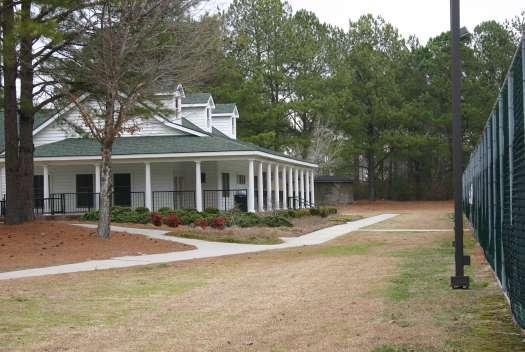
The Sports Connection is a unique indoor multipurpose facility that features indoor batting cages (baseball and softball) and gymnasium activities (basketball, volleyball, kickball, etc.). In addition to providing a valuable training facility for baseball and softball, this ± 17,000 S.F. special use facility also offers a venue for birthday parties and other special events. A meeting room and arcade allow this facility multi-use capability. There is a charge for the use of programs and facilities.
Gymnasium
5 Indoor Batting Cages (Softball and Baseball)
Pitching Area Arcade Meeting Room Offices
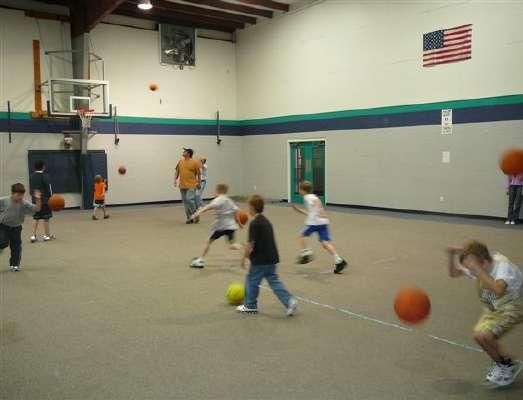
The Greenville Aquatics and Fitness Center is a 30,000 S.F. full service fitness and aquatics facility offering members a basketball gymnasium, indoor heated pool, weight room, fitness area, and aerobics/exercise classes. While the building is over 30 years old, recent and planned renovations create an updated, well maintained facility.
The Aquatics and Fitness Center charges a membership fee and produces the majority of its operational costs, although some programs are open to the general public. Approximately 1,300 individual and family memberships support the facility. Through creative programming and a strong marketing effort, membership to this facility could be increased.

In addition to the free play/exercise/swim the Center offers a wide selection of classes in aerobics, body toning, and aquatics. There are also classes in karate (youth and adult), ballroom dancing, and line dancing. Personal trainers are also available to assist members in their workouts.
Gymnasium Aerobics Room
Indoor Heated Pool Classroom Space
Weight Room Supervised Kids
Exercise/Cardiovascular Play Area Area Staff Offices
Locker Room
The Teen Center is a 5,100 S.F. special use facility located adjacent to Perkins Baseball Complex. It provides meeting/activity space, as well as a variety of other indoor activities. The building contains two (2) meeting/activity rooms; one of the rooms includes a refreshment bar and game tables. An outdoor sand volleyball court is adjacent to the building. In addition to teen activities, the building is used for bridge, computer training, and summer camp.
See previous description of these Recreation Centers: Elm Street
Center and South Greenville Recreation Center.

The Green Mill Run Greenway is the initial step to Greenville’s greenway system. The greenway begins in Greensprings Park on Fifth Street, runs along Mill Run Creek, through Wahl-Coates Elementary School, across Tenth Street, and through Elm Street Park. The trail, which is paved, crosses the creek several times along its 1.5-mile route.

The Phil Carrol Nature Preserve is a 185-acre tract of undeveloped park land set aside as a nature preserve. Currently there is little infrastructure to support public use of this facility. Development of infrastructure (parking, restrooms, trails, etc.) would greatly enhance the use of this facility. A master plan should be developed for this property.
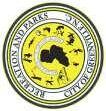

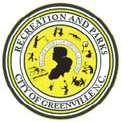
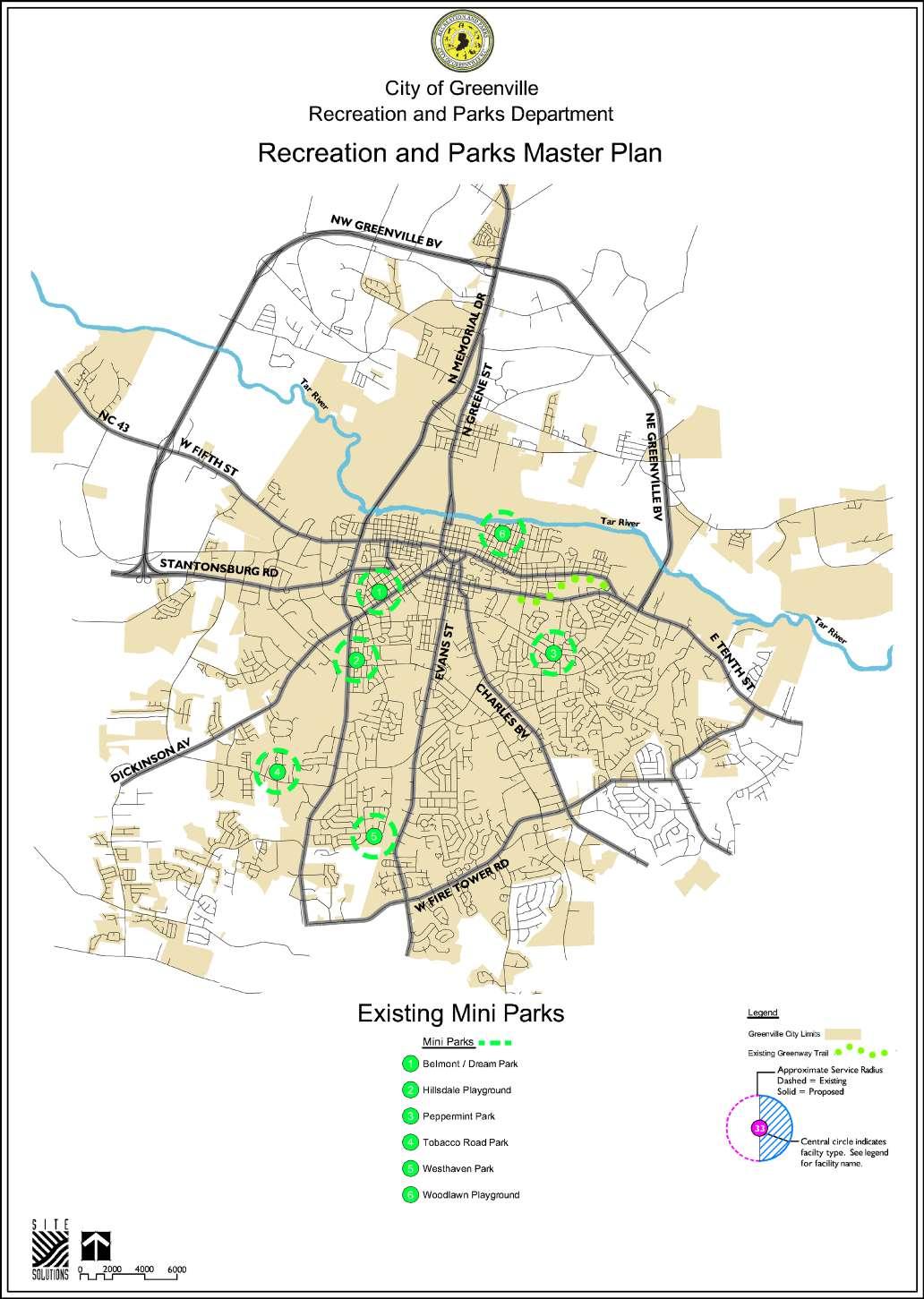
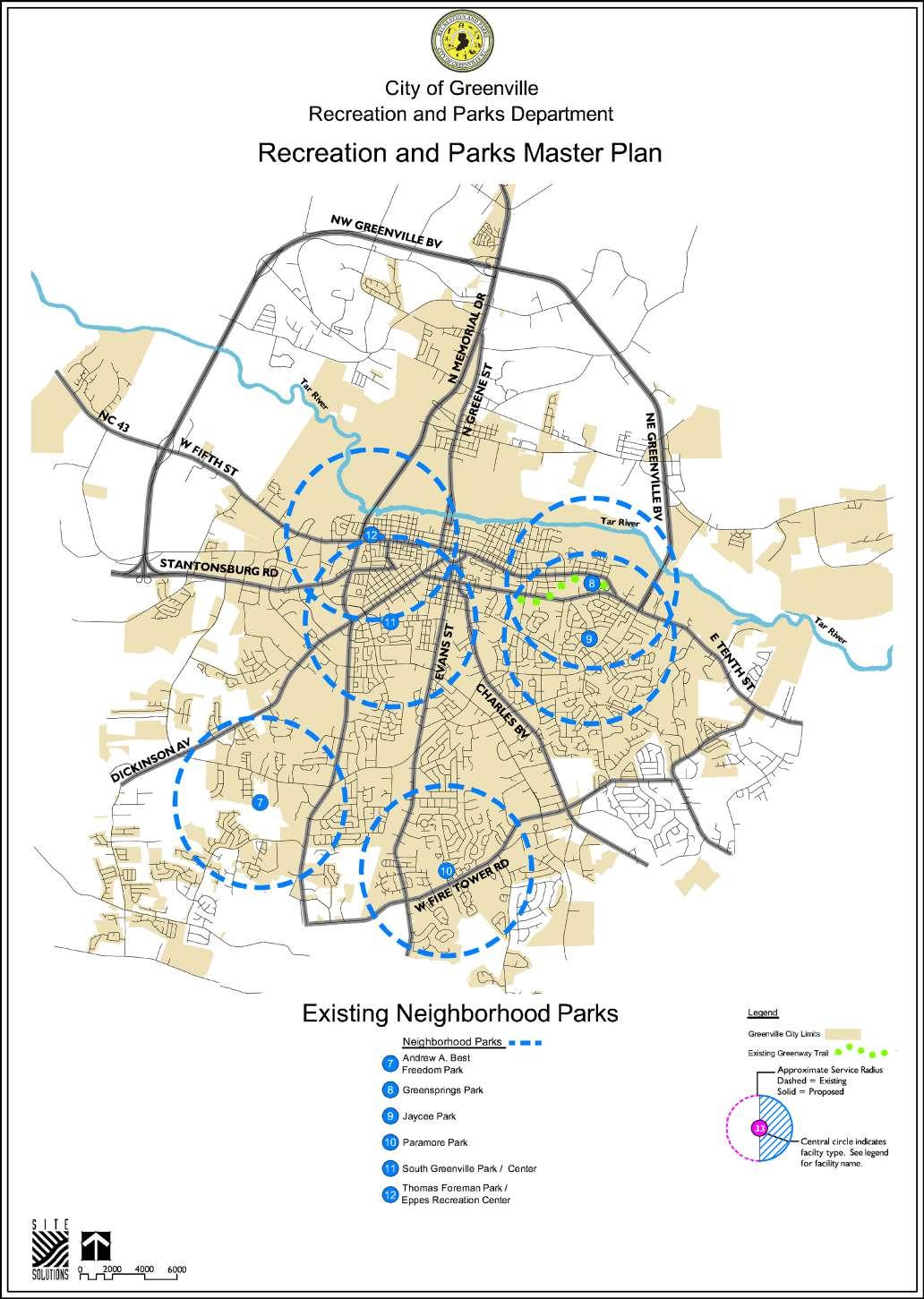


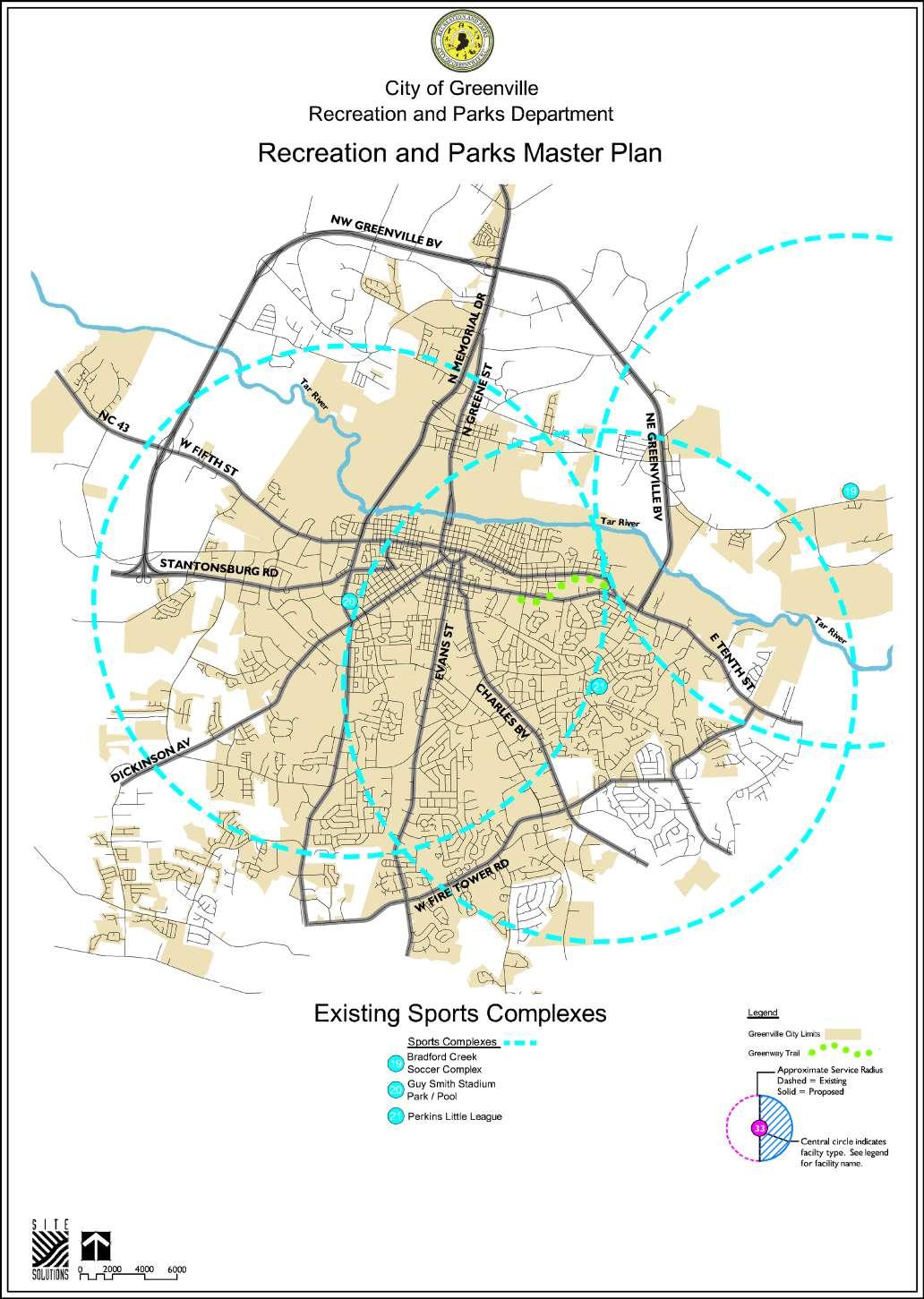
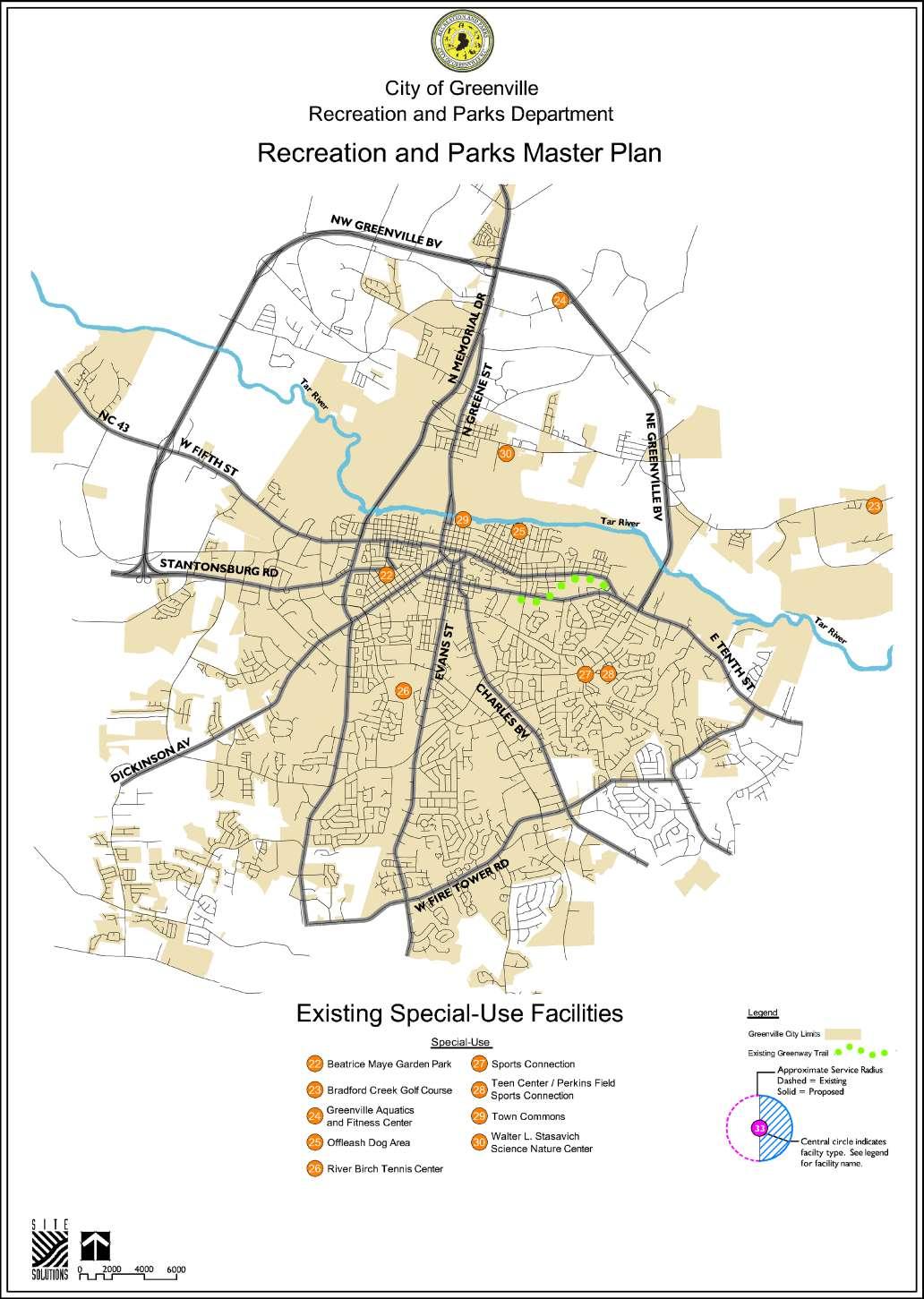
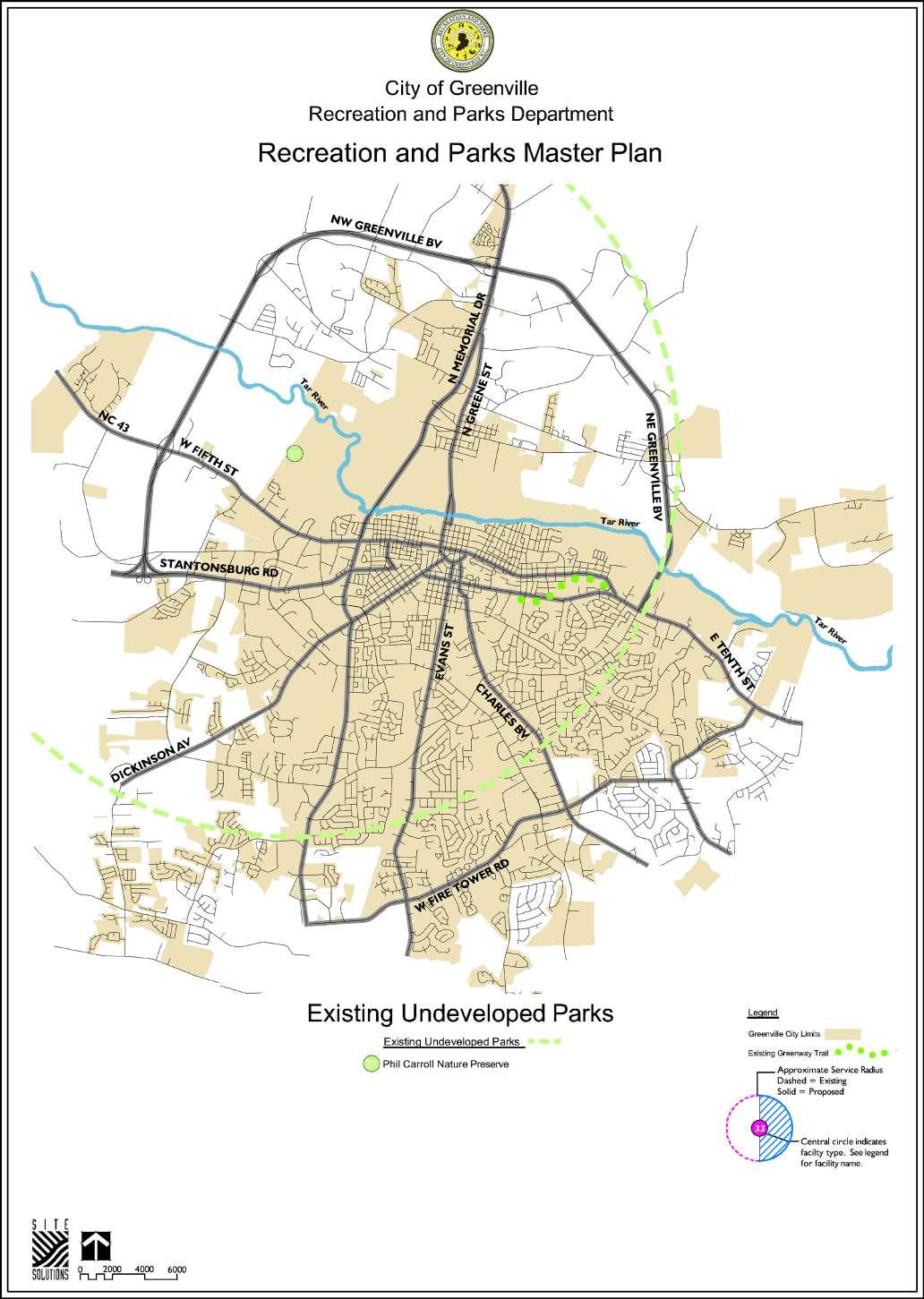
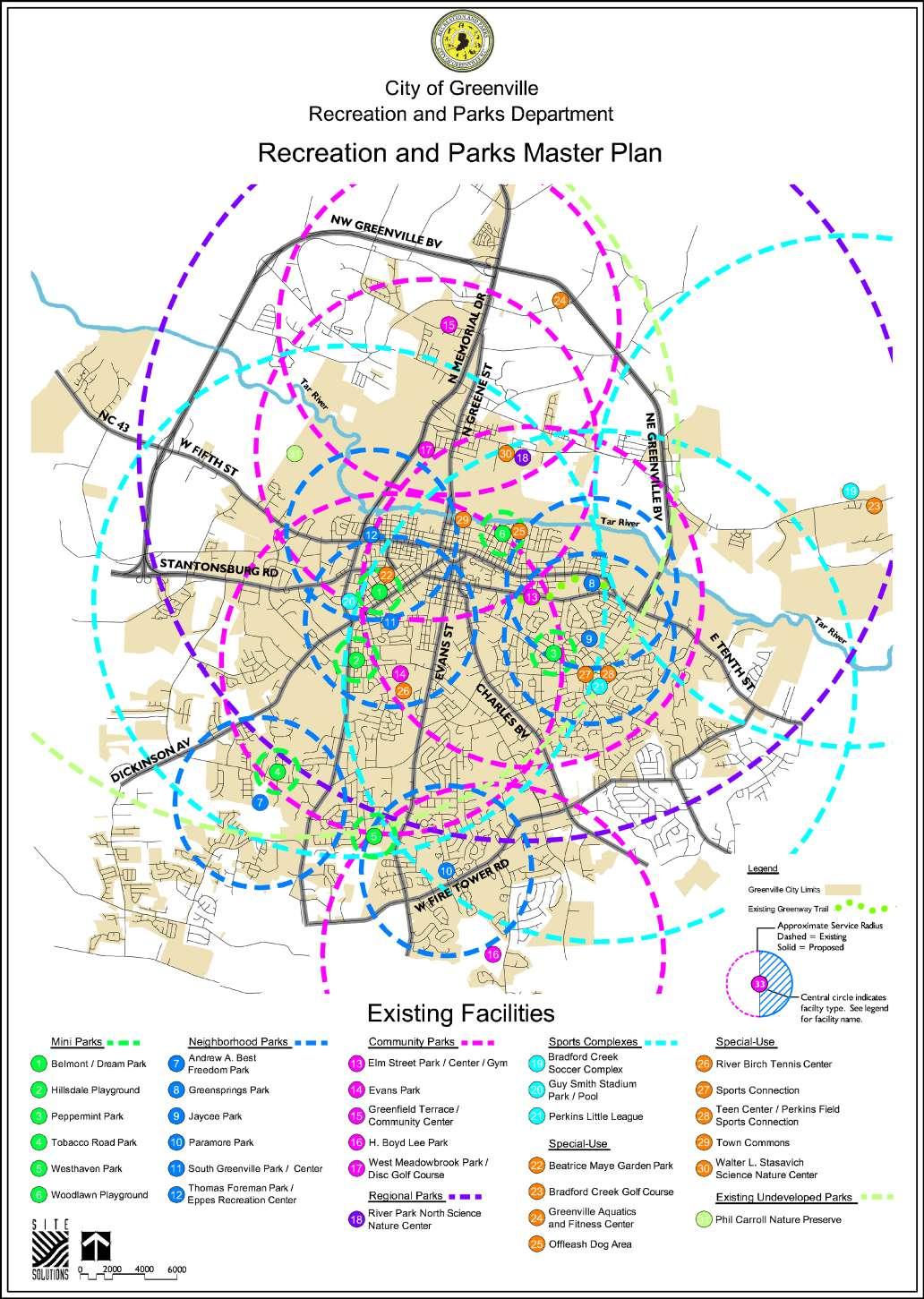
The first step in understanding the park and recreational needs of the City of Greenville is to develop an understanding of the people that make up the community. This section includes a review of the City’s population and demographics and looks at the changes that are occurring in the area. Greenville is located in the North Carolina Coastal Plain Region. Home of East Carolina University, one of North Carolina’s largest state supported campuses, and University Health Systems of Eastern Carolina, one of the region’s finest medical institutions, Greenville has become a hub of education, healthcare and research for the region. The university and hospital have served as a catalyst for growth, and Greenville now stands out as a center of commerce east of Raleigh and the Research Triangle.
Since 1990, the population of Greenville has increased drastically (from 46,305 in 1990 to 72,000 currently). With the continued success of both the university and Pitt County Memorial Hospital, even greater growth is projected for the next decade. This population growth places greater demand on the City’s parks. Identifying where future growth will occur, and understanding what the demographic make City

up of the population will be in the future, is key to projecting park and recreational needs.
In addition to reviewing the projected growth patterns of the City, this planning process has invested time and energy in learning community preferences for park development.
When developing a needs analysis, it is not enough to simply review changes in population and demographics. It is also important to understand the community’s desire for park and recreation activities. This planning effort incorporated several initiatives to assist the planning team in better understanding community preferences. These initiatives included:
Community Survey:
• a community-wide survey with over 400 telephone interviews was conducted as part of this planning effort.
Public Meetings:
• three public meetings were held to allow citizens to comment on park needs.
Stakeholder Interviews:
• over a dozen one-onone interviews were held with local stakeholders to learn more about park needs.
Located on the Tar River, Greenville’s early history was tied to the river. In the 1860s, Greenville was the home of several riverboat companies, and both goods and people came through the city as part of river transit. Like many rural communities, Greenville became a farming center. In the late 1800s, cotton was the major export, but by the turn of the century, tobacco had become the leading crop. Greenville became a center for tobacco marketing and warehousing.
Staff Meeting:
• The planning consultant met with Recreation and Parks Department staff to discuss facilities, programs, and operation.
Through these efforts, considerable insight was gained regarding the public’s desires for park and recreation programs and facilities. This section discusses the information gathered in preparation for the development of the master plan.
Greenville was originally founded in 1771 as Martinsborough; named in honor of the Royal Governer Josiah Martin. In 1774, the Town was moved approximately three miles to the west along the southern bank of the Tar River. Martinsborough’s name was changed to Greenesville in honor of general Nathanial Greene, the Revolutionary War hero in 1786. Later Greenesville was shortened to Greenville.
In the mid 1960s, Greenville began to emerge as an educational center. East Carolina Teaching College grew into one of the state’s largest state supported colleges. In 1967, East Carolina Teaching College became East Carolina University (ECU) and in 1977 the ECU Medical School admitted its first class. Today, the university has an enrollment of nearly 26,000 and attracts students from around the world. As ECU and its medical school have grown, Greenville’s flagship hospital, Pitt Memorial Hospital, has become a regional center for health care. The combination of education and medical excellence has allowed Greenville to attract the best and brightest from across the nation and throughout the world.
The energy found on the university and medical campuses has now migrated to the business community. Greenville and Pitt County now lay claim to some of the nation’s largest industries and businesses. DSM Pharmaceuticals (formerly

Burrough’s Wellcome), Rubbermaid, Nacco Materials Handling Group, Grady White Boats, and ASMO are just a few of the major corporations that have located facilities in Greenville/Pitt County.
The 2006 population of Greenville was 72,052; almost 20% more than the 2000 census population (60,476). While there has been significant change in the population since the 2000 census, a look at the census demographics is helpful in planning for the City’s future park needs.
Based on the 2000 census data, Greenville has a larger female population (53.7%) than male (46.3%). This 7% variation is significantly greater than the national male/female ratio which is almost evenly balanced (50.8% female).
In 2000, the median age of the Pitt County resident was 26, significantly younger than the 35.3 median age for the rest of North Carolina. It is assumed that this lower median age is attributed to the large number of students in the area.
White persons comprised 60.6% of the City’s population in 2000. This reflects a significantly lower percentage than the white population reflected throughout North Carolina (72.1%) or the entire country (75.1%). Black/African American persons made up 34.1% of Greenville’s population; while the state and country’s Black/ African American population (21.6% and 12.3% respectfully) is significantly less.
The median household income in 2005 was $26,633. This reflects a 10% decrease in household income from the 2000 census which showed a median income of $28,648. It is also significantly lower than the national median household income of $41,994 (2000).
Based on census data, over 46% (15,690) of Greenville’s civilian labor force (34,072) is in management, professional, or related occupations.
Sales and office occupations (8,748) comprise roughly a quarter (25.6%) of the workforce. Service occupations represent another 17% of the working population.
Education, health care, and social assistance is the largest industry employer group in Greenville. Almost 40% of the population is employed in this segment of the local economy. Arts, entertainment, recreation, and accommodations (including food service) comprise approximately 15% of the workforce, while retail sales is the third largest industry (12%) in the community.

Greenville is a very well educated community. 40% of the City’s population over 25 years of age holds at least a bachelor’s degree; 15% of the community have a graduate or professional degree. 88% of the population 25 years or older obtained their high school diploma or equivalent.
The demographics of Greenville are somewhat unique for North Carolina. East Carolina University and the hospital system provide a unique effect on the community. Their presence skews the median age of the community and fuels much of the local economy. Overall, the City has a very young, active population with a very high percentage of women and Black/African Americans. The population is very well educated with a relatively high percentage of professional workers.
There has been significant growth in Greenville’s population since 1990. In the past eighteen years, the City’s population has gone from 46,000 to 72,000; a 56% increase. This growth has been spurred by the expansion of the University and the Medical Center. This rapid rate of growth is expected to continue over the next twelve years (2020). The City’s Community Development Department has projected that the City will have a population of 106,000 by 2020. This projection is based on a departmental study of the community’s growth with particular emphasis on new utility connections. This increase in population is significantly greater than the proposed population projections used in the development of the 2000 Comprehensive Plan. The 2000 Plan projected a + 2% annual growth rate that ultimately resulted in a projected 2020 population of 86,398; roughly 20,000 less than the current population projection.
Perhaps the most important step in the planning process is obtaining an understanding of the public’s needs and desires for park and recreation programs and facilities. As part of this planning process, the Recreation and Parks Department staff and the planning consultant (Site Solutions) developed a methodology for gathering input from the public. Several methods were used to ensure the public was offered an opportunity to speak. The public input process included:
As a means of determining the public’s preferences for park and recreation facilities and programs, a telephone survey was conducted using a standard
questionnaire. The survey was developed and administered by Clark and Chase Research, Inc., a Charlotte based market research firm. Household selection was accomplished through a random sample of published telephone numbers throughout Pitt County.
During the spring of 2008, a total of 401 telephone interviews were conducted. The adult in the household was randomly selected to ensure that men and women of all ages were represented in the sample. Data was broken down into two geographic areas: Greenville city limits and the remainder of Pitt County. Because the primary focus of this planning study is the City of Greenville, the majority of responses (301) came from city residents.
Based on the methodology used, the study resulted in a maximum sampling error of + 4.9 percentage points at a 95% confidence level for the study. The following findings were from the survey:

Almost everyone interviewed (97%) felt that recreation areas and parks enhance the physical and mental well being of the community. Nine out of ten interviewed (89%) felt parks enhance the economic health of the community and 80% of those interviewed felt parks and recreation programs help reduce crime.
89% of the survey sample felt there is at least some need for additional public parks and recreation facilities; 45% of those interviewed felt the need is great. The responses to this series of questions was consistent between both City and County residents. Non-whites (69%), households with children (56%), individuals aged 18-44 (56%), and park users (52%) were more likely to indicate there is a “great need” for additional parks.
Two-thirds of all County residents have used a park or recreation area in the past year. Greenville residents visit parks more than County residents (82% vs. 51%). Families with children (78%), individuals 18-44 years of age (82%) and college graduates (80%) were the heaviest users of parks.
Among those who have visited a park in the last year, the majority have visited parks more than five times. The most popular park in the area is Elm Street Park. Almost onefourth of all park users have visited Elm Street Park this year. River Park North was the second most popular park.
Adults who do not currently use public parks said their primary reasons for not doing so was lack of desire (20%) or lack of time (18%).
Respondents indicated that they are most interested in using public parks for walking, jogging, and bicycling (90%). There was also a high demand for fitness activities and for festivals and concerts, and swimming received significant support (70%). While there is still considerable demand for organized athletics, these recreational activities did not rank as high as other park uses. Of all organized sports, basketball (63%) and baseball (55%) ranked the highest. Overall, there was very little difference in responses between Greenville and County residents on this question.
When asked about what other recreational facility they would like to see, 91% of those surveyed indicated they would like to see more greenway development and 82% felt open space should be increased. Community recreation centers received 82% support, while 75% said they would like additional water based activities. Responses from both City and County residents were very similar on this question.
Over half of those responding (53%) said that they did not use public swimming pools. Greenville residents (55% vs. 36%) were more likely to use a public swimming pool. It is assumed this greater use is because the public pool is located in the city. Usage of City Pool is greatest among non-whites (38%), households with children (33%), and park users (33%).
More than six in ten adults (63%) have used the Tar River for recreation. Park users (76% vs. 36%) are the most likely to use the river for recreation.
When asked about the level of satisfaction with the public parks in the area, fifty percent of the respondents said they were satisfied or very satisfied with the public parks in their area. Satisfaction was highest among respondents 65 and older. Approximately 10% of those responding said they were not satisfied at all with existing public recreation. Those living outside Greenville were most likely to express dissatisfaction with public recreation services.
The majority of those interviewed (60%) felt that current taxes should be utilized to fund parks. Only one in four (25%) expressed support for funding parks with new taxes. County residents were less likely to express support for new taxes to fund parks and recreation than Greenville residents.
When asked directly whether they would support a bond referendum to develop new and existing parks, seven in ten (69%) said they would support a park bond. Support was significantly higher (79%) among Greenville residents than County residents (58%).
A graded scale was used to ask respondents how much they would be willing to pay on an annual basis to improve recreation and park facilities. Twenty-five percent of those interviewed said they would be willing to spend $200 or
more annually for better parks. At the other end of the spectrum, forty-five percent said they would only pay $25 or less per year. Those with children, park users, and individuals 18-44 expressed the greatest willingness to pay for park improvements.
The people of Greenville believe that parks and recreation programs and facilities benefit the community. They also agree that there is a need for park improvements (nearly 90% of those responding said there was at least some need for additional public parks).
Respondents spoke strongly for the desire to walk, jog, and bicycle. Likewise, there was strong support for using parks for passive recreation, special events, and preservation of green space. On the active side of recreation, there was strong demand for fitness and aerobic activities, but less support for team sports (football and soccer). With regard to water based recreation, there was demand shown for swimming in the question regarding desired activities. However, use of the City’s existing swimming pool (City Pool at Guy Smith Park) is not popular.
Finally, with regard to willingness to pay for new park facilities, the majority of citizens are not supportive of new taxes for parks, but would overwhelmingly (79% of City residents) support funding park improvements with bonds. Almost a quarter of those interviewed said they would be willing to pay $200 annually to support new parks. Conversely, almost half of those said they were
willing to pay only $25 or less annually, or were not sure what they were willing to pay.
As part of this planning effort on March 25th and May 7th, one-on-one interviews were conducted with fourteen stakeholders. The purpose of these interviews was to gain important insight into the specific needs of various park user groups and community advocates for park and recreation. The interview findings are very insightful and represent a wide-spectrum of public and private interests. Views expressed during these interviews provided an important backdrop for the development of this Comprehensive Recreation and Parks Master Plan.
The following citizens/stakeholders were asked to share their views:
Mark Gillespie Parks Superintendent
Shana Kriewall Recreation Superintendent
Larry Spell City Councilman/Parks and Recreation Liaison
Thomas Moton Assistant City Manager
Wayne Bowers City Manager
Merrill Flood Community Development Director
Sandy Steele Recreation and Parks Commissioner
Dr. Patricia C. Dunn Mayor
Max Joyner, Jr. City Council Member
Rose Glover City Council Member
Bryant Kittrell City Council Member
Ray Craft Former City Council Member
Dr. Nelson Cooper East Carolina University
Dr. Jimmie Grimsley Retired East Carolina University Professor
Denise Walsh Uptown Greenville
Debbie Vargas Director, Greenville Convention and Visitors Bureau
David McRae Chief Executive Officer, University Health Systems of Eastern Carolina
William Brian Floyd Vice President, Cardiovascular Services, University Health Systems of Eastern Carolina
Each interviewee was asked a list of questions regarding the community, current parks and recreation services, and their vision of the department for the future. There was an overall agreement and similarity in many of the responses. The following is a summary of these one-on-one conversations:
1. What do you like most about living in Greenville?
Almost everyone interviewed spoke of the value of living in a community with an outstanding university. The university attracts a diverse population of educated, sophisticated, and worldly people. These people help create a city with lots of cultural activities and a metropolitan feel. This gives Greenville a large town feel, without “big city” problems.
Many also mentioned wonderful natural resources of open space, the Tar River, and rural character of the surrounding landscape. Likewise, many mentioned the parks and facilities offered by the Recreation and Parks Department as a valuable community asset.
Several people mentioned that while the city is rich in diversity, this diversity sometimes leads to segregation between groups of people. Likewise, there is sometimes a differentiation between Greenville natives and those moving into the community.
Several people pointed out the City’s lack of sidewalks and trails. Greenville is not a walkable community.
The importance of “smart growth” was mentioned several times during the interviews. It was also mentioned that recent growth has resulted in traffic congestion.
A number of intervewees noted that while ”metropolitan” in many ways (see answers in question number 1), as a relatively small city, Greenville lacks some of the retail and entertainment opportunities found in larger cities.
3. What role do local parks and recreation offerings (facilities and programs) play in the quality of life for the community?
Everyone interviewed felt the Recreation and Parks Department provides both programs and services that are meeting many of the community’s needs, and as a result, are critical to the excellent quality of life found in the community. Several people mentioned the quality of youth athletics, particularly youth baseball.
The value of the department goes beyond “play” value. Greenville’s quality programs and parks make the city attractive to businesses and adds to the economic vitality of the community. Likewise, youth sports, and associated tournaments, bring people to Greenville, also adding economic development.

Most people interviewed felt the City’s Recreation and Parks Department is doing a good job providing both facilities and programs. It was generally felt that the Department should continue to be responsive to citizen needs, constantly try to improve upon the delivery of recreation services, and improve existing facilities (where needed) and expand facilities and services as the city grows.
Several people expressed the importance parks and recreation programs can, and should, play in bringing diverse groups together.
5. What things are the Greenville Parks and Recreation Department doing right (facilities and programs)?
The following accomplishments were listed as “done right”:
• Extremely strong sports program; particularly youth programs
• A variety of excellent, well maintained facilities
• Strong senior programs
• Some internal procedures very strong (risk management and safety programs)
• Development of soccer complex was a big step
• Strong arts and crafts program
• Department is visible within the community; good public relations and marketing
6. What things could be improved?
• Need good and equitable distribution of facilities throughout the city
• Many suggested expanding greenways, trails, sidewalks; implement recommendations from the Greenway Master Plan
• Expanding facilities in perimeter areas of the city will help meet future needs
• Greenville is growing; need to plan for growth with land acquisition and facility development
• New neighborhood parks are needed; several stakeholders suggested requiring developers to dedicate land or make payment in lieu of dedication would facilitate these parks; others were against this approach
• Identify those who are not currently using parks and determine why they do not use the system
• Vandalism in some parks is a problem that needs to be addressed
• The Department’s marketing efforts should be expanded
• More interaction between the City’s recreation centers; this may be an avenue for bringing diverse groups together
• Facilities in west side need to be improved. Parks throughout the city should be equitable.
7. In the next ten years, Greenville’s Recreation and Parks Department should:
• Determine existing and future needs for parkland and facilities, prioritize those needs, and begin now to purchase land for future parks
• Strive for greater equity of facilities among all sections of the city
• Improve some internal operations of the department; establish more standardized procedures
• Develop a city wide greenway system
• Develop a major park in each quadrant of the city
• Expand the city’s aquatic program/facilities (mentioned several times)
• Construct several spraygrounds
• Provide an inclusive method of meeting special population needs
• Encourage community to take more ownership of parks
• Improve facilities in poorer neighborhoods
• Improve existing recreation centers
• Possible need for new recreation centers Parks can play an important role in downtown

• revitalization. Civic parks downtown provide a sense of place. Town Common is an excellent green space, but could be even better.
• Expand links to Tar River
• Review 100% Cost Recovery Policy
• Expand special events oriented around active recreation. This should go beyond softball and soccer tournaments but should include 10ks, walk-a-thons, etc.
8. As the largest parks and recreation department in Pitt County, Greenville currently provides park facilities and programs for citizens who live both within and outside city limits. What role should Greenville play in providing services to non-city residents and how should the City work with Pitt County in coordinating county-wide services?
Everyone interviewed felt there should be communication and cooperation between the City and County departments to ensure that duplication of services and facilities is minimized. It is important to recognize that county needs (more rural) are different than city needs (more urban); therefore, focus of departments will be different.
It was noted by several stakeholders that many County residents are using City facilities.
There are many opportunities where the City and County could work together on programs; for example, Senior Olympics and Special Olympics. Greenways and trails are another area that should have a strong link.
There are no written agreements to outline roles and responsibilities since 1993. Written agreements between the two departments should be developed and executed.
While it was mentioned in several interviews, no one suggested a merging of the two departments.
9. What role should Pitt County Schools be playing in providing opportunities for park and recreation activities?
Everyone interviewed agreed that the Recreation and Parks Department and the school system should be working together on joint use of facilities whenever possible. This will lead to the best use of public funding for facilities.
Many stakeholders pointed out that school recreational facilities are not adequate for school or recreational use.
Written joint use agreements should be established between the schools and the Recreation and Parks
Department. There are some good joint use programs going on (City uses school buses for summer programs). These should be built upon.
Members of the Greenville Recreation and Parks Department met with the planning consultant on Wednesday, May 7th to review the master plan process and discuss ways to make the master plan relevant and useful. The meeting began with an overview of the planning process and schedule. Staff members seemed very supportive of the master plan process and were actively engaged in discussions about the Department; how to build on its success, and how to improve in areas of need.
Following the discussion of the planning process, the group went through a series of open-ended questions about current programs and facilities and goals for the future. The following questions were asked and comments made:
What things are the Greenville Recreation and Parks Department doing right (facilities and programs)?
• Baseball programs are some of the best anywhere.
• The Department offers a wide variety of programs.
• Outstanding special use facilities. A municipal golf course and tennis center in a city the size of Greenville is an accomplishment.
• Outstanding playgrounds. They are up to date and well maintained.
• Lawns and grounds are well maintained.
• Programs for special populations have grown.
• Senior citizen programs with County.
• The Department is working with other agencies to provide programs and services but could expand/build relationships with the County parks department and ECU.
• Greenville has one of the best departments in the region. People from outside the area recognize Greenville as a leader in the parks and recreation field.
• Marketing of the Department’s facilities, programs, and accomplishments should be improved. A marketing position should be added to the Department. It was noted that public information sent through the City’s Public Information Department has improved.
• Information on programs should be sent out (particularly to schools and businesses) in a timely manner.
• Park maintenance facilities need to be improved. The Department’s central maintenance facility is old and outdated. Maintenance operations should be reviewed to see if a district maintenance system should be considered.
• Bike and walking trails should be expanded.
• More inclusion programs should be developed. Accessibility of all facilities should constantly be reviewed and improved.
• Ballfield lighting is needed on many fields.

• Bradford Creek Golf Course needs major improvements.
• Maintenance entrances/access in many parks (Boyd Lee & Bradford Soccer Complex) need to be improved.
• Radio communication for maintenance and operational staff needs to be improved.
In the next ten years, Greenville’s Recreation and Parks Department should:
• Demand for parks will grow in the next ten years. Retirement of the Baby Boomers, greater transportation costs, etc. will result in more people using parks. The Department must plan for this increased demand.
• Security in parks and on greenways must always be a concern.
• Water conservation will become a critical issue in facility development and maintenance.
• Volunteer programs are a great way to expand the Department while not expanding operational cost. Ways to encourage volunteers should be explored and encouraged.
• Maintaining facilities in good, safe condition is important.
• Better signage is needed in parks. Getting people to parks, and then guiding them through the parks is important. Currently many parks do not have adequate signage.
• Expansion of walks/boardwalks in River Park North will increase use and environmental education opportunities.
• A water park facility would provide a unique special use facility and could be used for revenue generation.
• Develop a system for rotating programs throughout recreation centers.
The Master Plan should include:
• An assessment of operational and maintenance cost of any proposed capital improvement. The Master Plan should not include more new facilities than can adequately be programmed and maintained.
• Recommendations on improvements to maintenance facilities.
• Acknowledgement that staff are the key to success. The Department should invest in attracting, training, and keeping quality people.
• The Department needs to clearly identify their client. City residents vs. County residents.
• A review of other institutions in the service area providing recreational services and facilities and determine if services are complimentary or competitive.
As part of the planning process, three public workshops were held to obtain citizen input and allow a public review of the plan as it was developed. These workshops were held over a period of several months in different areas of the city. The following is a summary of these meetings:
The first public meeting to discuss the Greenville Comprehensive Plan for Recreation and Parks was held on Tuesday, May 6th at Jaycee Park. Over 40 people attended the meeting.
Gary Fenton, the City’s Recreation and Parks Director, opened the meeting by welcoming those in attendance, introducing staff and local officials in attendance, and giving a brief overview of the role of the comprehensive plan and the importance of public input in developing the plan. He then introduced Derek Williams of Site Solutions, the park planner for the planning process.
Mr. Williams began the presentation by explaining the purpose of the meeting (to obtain public input) and noted that the meeting was about asking questions and listening. No plans or recommendations have been formulated to date. With that understanding, the six steps of the planning process were presented and findings from the county-wide recreation survey were shared.
Following the discussion on planning process and survey, attendees were asked a series of questions regarding current park facilities and services, and desires for future facilities and services. Attendees were asked to express their preferences on the following questions/issues:
When asked if they had used a public recreation area, park, or trail in Greenville within the past year, everyone attending except one person said yes. Half of those present said they used a park monthly; almost half said they used a park weekly. Parks used included:

Participants were asked to rate their level of satisfaction with Greenville parks. Following some discussion on the difference between evaluating the condition and value of existing facilities, and evaluating the overall departmental offerings (whether or not existing facilities are adequate to meet current/future needs), the group decided that the question should differentiate between the evaluation of existing park facilities and an evaluation of whether the current facilities were adequately meeting recreational needs.
• areas of the city including Afro-American areas Develop safe bikeways
Provide equitable distribution of parks in all
• Develop walking trails (mentioned repeatedly)
Overall it was felt that there was general satisfaction with many of the department’s existing facilities, but the majority of people felt additional facilities were needed. It was noted on several occasions that the department is excellent; staff is “top notch”. Lack of facilities is the problem.
When asked what improvements and/or expansions to facilities and/or programs the department should consider, the following ideas were presented:
•
•
•
Provide large open spaces
Expand greenways and trails
Build pocket/urban parks
• mind
•
Design and build all facilities with safety in
Improve existing facilities
• recreation
•
•
Need additional swimming pools/water based
Connect people with parks through greenways
Provide mixed use/multiple use parks
• some park facilities
Developers should be responsible for providing
• build parks
•
•
•
Look for 501(C)(3), public/private ventures to
Light ballfields and courts to extend use
Provide parks for solitude and nature classes
Provide a place for astronomy
•
• Use old City landfill as a park
Participants were asked if they felt the current offerings of the following facilities were meeting community needs, or should these types of facilities be expanded. The following responses were made:
Overall there was strong support for greenways and open space, with mixed support of athletic fields, water based recreation, and community centers.
Finally, participants were asked how public recreation and park facilities should be funded.
Several people also suggested raising money through donations and corporate sponsorships, and several people said developers should be required to dedicate land and/or donate funding for park development.
When asked how much their household would be willing to spend on an annual basis to improve recreation and park facilities, the following responses were received:
Following the discussion on the planning process and the response to questions, the meeting was opened up for public comments and questions. Six citizens signed up to speak, but several others also made comments. The following is a summary of their remarks:
Marion Blackburn provided a wonderful description of the city-owned property (120 acres) on NC 33 East/10th Street Extension and the desire to see this property developed as a park with active and passive recreation. Possible uses included:
•
Trails
Herb Carlton spoke on the value and importance of greenways (open space, exercise, alternative transportation, etc.) He was on the Planning Committee of the 2004 Greenway Master Plan and supports the implementation of the plan. Herb stressed the importance of maintaining existing and proposed park facilities, and the importance of considering the cost of maintenance and operation when planning for these future facilities. He recommended park construction and operation should be based on “green” principles, and include recycling in planning.
•
Tent Camping
• Ballfields (on open fields)
Bob Edwards discussed the importance of biking and development of bike trails.
•
Picnicking
• Star Gazing
• Dog Park
Environmental Education
•
It was noted that this park has received support from many Greenville residents and there are many opportunities for funding this park (Clean Water Trust Fund, Friends of the Park, etc.). Marion appeared to be the designated speaker on this issue, but most everyone in attendance showed support for the development of this park.
Bill All, President of Carolinas Skies Astronomy Club and recent appointee to Greenville’s Recreation Advisory Commission, spoke of the need of a “Greenville Family Astronomy Park” to provide a place for astronomy, star gazing and education. He noted the land on Route 33 would be ideal for such a use.
Terri Edwards spoke of the growing popularity of lacrosse and the values of youth sports to the community. There is a growing need for lacrosse fields.
Don Williams talked about the value of parks for open space/green space and the need for places for walking, outdoor classrooms, community gardens, and for unstructured play like hide and seek.
Following the six speakers who signed up to share their comments, a general discussion was held, and many people expressed their views on park needs. Overall everyone was very supportive of the planning effort and felt parks play an important role in the community. As noted above, many of those in attendance expressed strong support for the development of a park on the City’s property on Highway 33.
The meeting was adjourned at 9:00 p.m. by Gary Fenton, who thanked everyone for attending and asked them to attend the second public meeting on June 3rd at Eppes Recreation Center.
The second public meeting to discuss the City’s Comprehensive Plan for Recreation and Parks was held on Tuesday, June 3 at Eppes Recreation Center. Over twenty-five citizens attended the meeting. Many of those in attendance had also attended the first public meeting on Tuesday, May 6th. In addition to the citizens, the Mayor and several Council members (Council, Glover and Mercer), and representatives from the City’s Recreation and Parks Department were present.
Gary Fenton, the City’s Recreation and Parks Director, opened the meeting by welcoming those in attendance and provided a very good description
of the purpose of the Comprehensive Plan. He then introduced Derek Williams, Park Planner.
Mr. Williams explained the purpose of the meeting was to gather public input and that it was a continuation of the first public meeting. Further, he explained that much work has been done on the plan since the May meeting, and while a general framework has evolved, all work is in the formative stages. Input from this meeting will guide the plan as it is solidified.
The presentation was a combination of information from the first public meeting (to inform those who had not attended the first meeting) and recommendations for recreation standards to be used in developing the master plan. A general overview of the planning process was given, as well as a summary of the findings from the telephone survey. In addition to the background information, new standards for park development and recreation facility development were provided. Overall, many of the standards and assumptions made in the 2000 Master Plan are still valid. Based on this understanding, there appears to be a need for the following additional parks:
1 District Park
2-3 Community Parks
4-5 Neighborhood Parks
12-15 Mini Parks
Next, a list of general observations/recommendations was made. These recommendations included:
• Greenville is rapidly growing. Open space is disappearing. Preserving open space is important. The significance is becoming more apparent as the city grows.
• Many of the facilities in the inner city are in need of improvements/expansion. Park resources must be balanced between improving existing facilities and building new facilities.
• Greenville is not pedestrian friendly. Greenways and trails should be developed to provide pedestrian links between different sections of the city.
• There is a need for an additional indoor aquatic facility.

• There is a desire to develop more neighborhood/ mini parks. Walk-to type parks.
• A marketing position in the department is needed.
• As the department grows, maintenance operations will grow. Currently there is a need for significant improvements to the existing maintenance facility. Future development may lead the department to consider district maintenance.
• The ten-year capital needs for parks will be significant. Partnerships will need to be developed to share these costs.
Following Mr. Williams’ presentation, the meeting was opened to the public for comment. Three people originally signed up to speak, but several others voiced their opinions of future park/departmental development. Comments included:
Dr. Melanie Hames spoke in support of developing a public park on the land on Highway 33 and suggested that this future park be connected to other parks and the river by greenways. She discussed the importance of trails and bikeways as they relate to healthy and active lifestyles and that the Tar River is a valuable asset that should be utilized for waterbased recreation.
Ann Weingartz spoke on the importance of youth athletics in developing well-rounded youth. There are many participants in all youth sports and the City has a need for practice facilities and fields.
Donna Whitley spoke about the Elmhurst Neighborhood and how it should be used as a development model for future neighborhoods. It has endured as a successful neighborhood for generations. Its success is related to having schools, parks, and greenspace all within walking distance. She feels that neighborhood parks are important and should be included in the plan.
Other Comments made by citizens included:
• The County has many miles of easements along drainage easements throughout the county. These easements, if properly utilized, could provide a county-wide greenway access to the river.
• While the river is relatively shallow and offers only limited use of power boats, it is an excellent water source for canoes and kayaks.
• The Tar River should be utilized more. The quality of the water will support swimming and other aquatic use. Trash, rocks and other hazards are the real obstacle for using the river.
• The importance of developing bikeways (off and on-road) throughout the city was mentioned several times. It was noted that this is not simply a recreation and parks issue, but must also involve public works and transportation.
• A bikeway task force has been established. The Recreation and Parks Department should stay actively engaged in their discussions and promote their efforts to improve the City’s bike routes.
• Interconnectivity of parks is important; another reason to build greenways.
• Disc golf is a popular and inexpensive sport. Currently the City has one disc golf course. Others should be developed.
• The buyout property adjacent to the City’s new dog park could be developed as a new city park with open space, water access, canoe launch, and fishing dock. River Park South.
• Sidewalks should be built throughout the city. These sidewalks can become part of a citywide greenway that would provide a walkable community and connect parks and other points of interest.
• Preservation of greenspace is important for the quality of the community. Currently developers are building residential communities with no open space or parks. The City should require developers to dedicate land for parks and open space. (This was mentioned by several people)
• The youth tackle football program needs practice fields.
• Councilwoman Glover spoke of her involvement with the League of Municipalities and her trip to California where she saw an outstanding sprayground/playground made of recycled tires. She also discussed the Kaboom Playground in Creedmore and her interest in working with this organization to build parks. She noted there are many things the City (working with volunteers and corporate sponsors) can do to provide parks and playgrounds.
The meeting ended at 9:00 p.m. after more than an hour of comments/discussion by those in attendance. Overall there was very strong support for developing better parks and preserving open space throughout the city. Recreation and Parks Director Gary Fenton closed the meeting by thanking all of those in attendance for their participation and inviting them to participate in the third, final meeting on June 24th at Boyd Lee Park.
The third public meeting to discuss the City’s Comprehensive Recreation and Park Master Plan was held in H. Boyd Lee Park’s gymnasium. The meeting was very well attended; over 75 people were present. Many of those present had attended one or both of the previous public meetings.
Gary Fenton, Recreation and Parks Director, opened the meeting by welcoming those present and introducing the city staff, Advisory Board Members, and elected officials in attendance. He then provided the audience with a description of the purpose of the master planning process, stressing the importance of public participation in developing and implementing the plan.
Following Mr. Fenton’s remarks, Derek Williams, Park Planner, led those present through a brief review
of the planning process and presented a summary of proposed improvements/recommendations to be included in the Master Plan. These recommendations included:
Major Renovations to the Following Existing Facilities:
•
•
Eppes Center
Drew Steele Center
South Greenville Recreation Center
The Acquisition and Development of the Following Parks: 15
•
•
• City Pool
•
•
•
Highway 33 Community Park
H. Boyd Lee Park
Consideration of the Following Operational and Relationship Recommendations: Increase marketing efforts/add staff position
• Improve/expand maintenance facility
• Add a park planning position
• Research/implement operational and
• construction measures to make department “greener”
• development of parks
Investigate “outside” sources to assist in
- Public/private partnerships
- Development community
- Friends of the parks
- Corporate sponsorship/donations
Explore ways to continue and expand joint use
• opportunities with Pitt County Schools in the use/development of facilities.
Where applicable, coordinate programs and
• facility development with Pitt County Community Schools and Recreation.
Work with University Health System of Eastern
• Carolina in developing programs that promote healthy lifestyles.
• bikeways throughout the community
Work with the task force on development of
Following the presentation of these recommendations, the meeting was opened to the public for comment and discussion. Nine people signed up to speak and the following comments were made:
Bill All spoke in support of the development of a site for stargazing and astronomy would provide a valuable program/educational element to the City’s park offerings. The City’s property on Highway 33/10th Street Extension would be ideal for this park use.
Tony Parker spoke in support of developing a park on the City property on Highway 33.
Ginny Cooper spoke on behalf of Greenville’s population with special needs. Speaking as a mother of a child with special needs, she asked that the Department seek advice and work with parents and caregivers as they plan and develop programs and facilities. It was noted that the Department once had excellent service/support for citizens with special needs, but currently is not as actively engaged with this segment of the population. In summary, the Department should be open to listening to those with special needs.
Ryan Nyquist spoke about the unique opportunity Greenville has to become a major center for extreme sports because of all of the world class competitors that currently live in the area. He praised the City for its support and development of Extreme Park and asked for additional facilities to be constructed as new parks are built.
Matthew Farris gave an excellent presentation describing the sports/activities he enjoys and asked that the City provide opportunities for those activities for all citizens; including those with special needs.
Tammy Perdue spoke of the need for an indoor/ outdoor complex for competitive swimming. The value it would bring as a sport, and the value it would bring as a catalyst for economic activity. She presented a petition of support for an aquatic facility signed by 149 citizens.
Chris Mansfield, from the Tar River University Neighborhood, spoke in favor of developing a park in the City’s “buy-out” property adjacent to the Offleash Dog Area (River Park South). He stressed the importance of “connectivity” between parks; through greenways or sidewalks. In addition, he talked about the importance of partnerships for developing the many park needs which have been identified as part of this master planning process.
Marion Blackburn spoke in support of developing a park on City property on NC33 and provided a list of potential park uses (see minutes from first public meeting).
Greg Lewis, a member of Pitt-Greenville Soccer Association (PGSA), stressed the growth and popularity of soccer and the need for additional fields. He thanked the Department for the development of the Bradford Park Soccer Complex, but requested improvements to the complex; particularly the need for restrooms. Suggested tournament level soccer facilities would result in more tournaments which would generate economic activity.
The last two speakers did not identify themselves. One spoke of the values of greenways; stressing the importance of safe crossings at streets. The second spoke of the value of the Tar River, and how the City was not using the river to its full potential; recommending the development of river access and of blueways.
Overall, everyone seemed in general agreement with the recommendations that were made. Several people spoke in support of some of these recommendations, and no one spoke against any of these recommendations.
Following almost an hour of open discussion, Gary Fenton closed the meeting by thanking everyone for attending and providing input.
This section contains the analysis and assessment on which the recommendations of this Comprehensive Recreation and Parks Master Plan is based. It begins with a brief history of previous planning efforts conducted by the City of Greenville, and how the documents developed from these studies have shaped the current system. Next, we review how other communities are working to provide park and recreation facilities to their constituents, and national and state trends in park and recreation preferences. This review of previous planning studies and similar agencies is followed by a description of the park types that typically make up a park system. Using these park types as a backdrop, national and state standards are reviewed and used as a basis for establishing standards for park development for Greenville. Standards quoted in this study are based on those proposed by the National Recreation and Park Association (NRPA) and the North Carolina Department of Environment and Natural Resources (NCDENR), and established in previous Master Plan studies. It should be noted that the NRPA, in its 1995 report “Park, Recreation, Open Space and Greenway Guidelines”, determined there are no “national standards” for park development. Instead, the latest NRPA study recommends that each community is unique, and that standards reflecting
Comprehensive Recreation and Parks Master Plan
 Concert at Town Common
Concert at Town Common
the local “uniqueness” should be established. With this understanding, this Master Plan uses a combination of local standards to evaluate the City’s current system and to establish goals to meet future growth.
This study looks at two types of park standards. The first analysis looks at total acreage of parkland within the system and how this acreage is broken into park types. From this study it is possible to see how Greenville’s existing parks compare with other communities, both in overall park acreage and park types within this overall acreage.
The second analysis looks at recreation activities and the facilities required to program these activities. By establishing a population-based standard for various recreation activities, this study establishes the type and quantity of facilities the Department should develop in the future.
The design standards used in this study were derived from citizen input and input from the Recreation and Parks Department staff. The development of these standards is perhaps the most important step in this planning process.
In 1999 the City went through a similar planning process to develop a comprehensive master plan. This effort was the first major planning effort for parks since the 1970s. Much like the process undertaken for this planning effort, the 2000 Comprehensive Master Plan included a detailed inventory of existing facilities, several public meetings, and much public involvement. The plan set direction for the Department for a twenty year period (2020).
The 2000 Comprehensive Master Plan included recommendations for the following park improvements/expansion:
$14.5 million in renovation to the City’s existing • parks
• of new parks
Acquisition and development of over 400 acres
•
2 new district parks (1 City, 1 County)
• West Greenville)
2 new community parks (East Greenville &

• west, southeast)
•
5 new neighborhood parks (east, 2 south,
15 mini parks
• facilities
Major improvements to Greenville’s special use
• center
•
•
•
•
•
•
•
•
Expansion of/improvements to the aquatics
Expansion of River Park North
Development of the Carrol property
Improvements to Town Common
Improvements to Guy Smith Park
Expansion of Green Mill Run Greenway
Development of a soccer complex
Improvements to Bradford Creek Golf Course
Development of an aquatics facility
The park development and improvements recommendations found in the plan represent a capital improvements program of $45 million over the twenty year planning period. The 2000 plan recommended a series of park improvement bonds, a one cent increase to the City’s property tax, and exploration of joint-use development (schools, county, etc.) of facilities.
The 2000 plan called for developers to “assist Greenville in the dedication or reservation of future park sites as part of the overall land development process”. Recommendations included “parkland dedication requirement” and a payment in lieu of dedicated programs.
Greenville’s original greenway master plan was developed in 1991. In 2004, the City developed an update to the 1991 plan. The planning recommendations were based on input received at two public workshops on greenways. The 2004 Greenway Master Plan validated many of the decisions made in the original plan and proposed new greenway corridors for areas of the city that had developed since the 1991 plan.
The Greenway Master plan identified fortytwo individual greenway projects. If these recommendations are followed, the City will develop over 90 miles of greenways and sidewalk connectors. While the majority of these improvements are trails along creeks, parks, etc., the greenway plan also calls for the convergence of several sidewalk corridors to provide a pedestrian link.
The City’s first comprehensive plan was adopted in 1981. In 1992, the original Horizon Plan was adopted. This plan, which established recommendations for all aspects of community development, was amended in 1997 and updated in 2004. Recreation and Parks were among the community services addressed in this plan. The following objectives were stated as part of the 2004 Horizons Update:
• in all neighborhoods.
To provide park and open space opportunities
• facilities at City parks and public schools.
To increase access to and use of recreational
• utilization of the Tar River.
To increase the public awareness and
• projects in the city.
To continue the construction of greenway
• the enjoyment of citizens.
To continue to acquire more open space for
• sidewalks and bike paths).
To expand recreation infrastructure (i.e.,
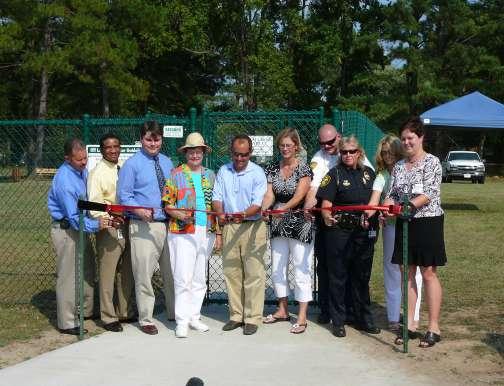
• facilities for all new development.
To require dedicated park/recreational
• to all residents.
To provide a diversity of recreational experiences
• recreational experiences.
To provide residents with opportunities for new
• natural environment.
To promote, preserve, and protect Greenville’s
To develop/provide for a variety of recreation
• facilities and programs for people of all ages.
In addition to the section on Recreation and Parks, parks, greenways, and open space were mentioned in many other sections of the Horizon document. Greenways, sidewalks, and trails were discussed as alternatives to vehicular traffic. In the section on greenways, preservation of open space was listed as an objective of growth and development. Encouragement of provisions for public recreational facilities and areas was listed as an objective of services and facilities. This section also included recommendations of revising the subdivision regulations to require standards of NRPA, considering impact fees for financing parks and open space and coordinating development of recreational facilities with the school system.
Under the Environmental Quality section, recommendations include conserving open space, using 100 year flood plains as open space and greenways, and incorporating wetlands into future parks. Under the sections covering smart growth, recommendations included encouraging compact building patterns to preserve land for city and neighborhood parks.
It is apparent when reading the City’s Horizon Plan that parks and recreation areas should be playing an important role in the fabric of the community. The acquisition and development of parks, open space, and greenways can have a significant influence on the quality of life of the community.
In an effort to understand the demand for various recreation activities, this Master Plan reviewed other studies on similar parks and recreation issues.
Surveys designed to determine the demand for outdoor recreation have been conducted on the Federal level by the President’s Commission on Americans Outdoors, the State of North Carolina, and various other organizations and associations.
The President’s Commission Report indicated the following significant facts:
The top ten outdoor recreation activities nationwide are as follows:
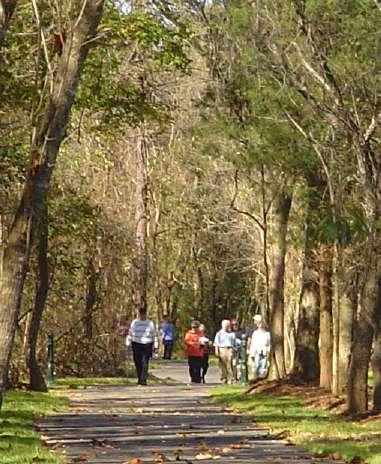
Picnicking
Driving for pleasure
Swimming
Sightseeing
Bicycling
Activities rapidly growing in popularity include:
Canoeing
Bicycling
Attending outdoor sports
Camping, all types
Sailing
Hiking/backpacking
Walking for pleasure
Water skiing
Playing sports
Fishing
Attending sporting events
Boating
Walking for pleasure
The local levels (cities and counties) of the nation are providing 39% of the public recreation opportunities.
The National Sporting Goods Association (NSGA) conducts an annual study of sports participation. The survey lists the following top 30 activities per million participants. A participant is defined as someone seven years of age or older who participates in a sport more than once within a year for all sports except aerobic exercising, bicycle riding, exercise walking, exercising with equipment, running/jogging, step aerobics, weight lifting, and swimming. For these seven fitness sports, participation is defined as six times or more during the year. The following information reviews the findings for the past ten years.
The North Carolina Outdoor Recreation Survey provides an indication of the most popular outdoor recreation activities in the state. These activities include:
The Recreation Resources Service at North Carolina State University conducts an annual study of municipal and county spending on parks and recreation services throughout North Carolina. This study reviews both operational and capital spending of these municipal and county agencies. Over one hundred agencies participated in the study.
The study breaks agencies into groups based on population, geography, and agency type (municipal vs. county). The City of Greenville was included in Category/Class B; agencies with populations between 50,000 and 99,999. With a current population of 72,000, Greenville is in the middle of its Class B category in size.
Based on information provided for the 2007-2008 study, Greenville’s proposed operational and capital budget for this period was $6,277,071, higher than most of those in the Class B category.
As noted below, the City of Greenville’s operating and capital expenditures is comparable to municipal agencies throughout the state.
Agencies from throughout North Carolina with similar populations were chosen for a more detailed comparison. These included:
A detailed breakout of this operational spending shows that the City of Greenville ranks relatively high among cities in North Carolina with similar populations.
A review of the per capita spending (including both operational and capital expenditures) for the same cities demonstrates that the City of Greenville ranks relatively high in overall per capita spending.
Another way of benchmarking the City’s parks and recreation facilities/programs is to compare Greenville with other outstanding communities from across the nation. The American Academy for Park and Recreation Administration (AARPA), in partnership with the National Recreation and Park Association (NRPA) presents National Gold Medal Awards to the nation’s outstanding park and recreation agencies for excellence in the field of recreation management. Gold Medal winners exhibit excellence in:
•
•
•
Long range planning
Fiscal resource management
Citizen support systems
Environmental stewardship
•
• Preservation
•
•
•
Technological integration
Program planning and assessment
Professional development
Agency recognition
•
• Services for special populations
With a current population of +72,000, Greenville is similar to cities in the Class III population category (50,001 to 100,000). This planning effort reviewed Gold Medal winners from the Class III category from 2006 and 2007.
City of Bloomington Parks and Recreation, Bloomington, Indiana
2007 Gold Medal Winner, Class III (population 50,001 to 100,000)
Population 69,291
Median Family Income (2000 dollars) $50, 054
Median Home Value $162,700
Employees: 58 Full Time (300 seasonal employees)
The City of Bloomington’s Park and Recreation Department is responsible for $43 million in community assets including thirty-one parks and approximately 2,300 acres of public land (includes two cemeteries and a golf course). The Department offers four community centers, a golf course, two sports complexes, an ice arena, community theater, and thirty miles of trails. Recreation facilities include eleven shelters, thirteen ballfields, twenty-two tennis courts, and nineteen basketball courts. In addition to the distinction of being a Gold Medal winner, the Department has maintained accredited status through the Commission of Accreditation of Park and Recreation Agencies.
Bend Metro Park and Recreation, Bend, Oregon
2006 Gold Medal Winner, Class III (population 50,001 - 100,000)
Population 70,328
Employees: 90 Full Time
Median Family Income (2005 dollars) $40,857
Median Home Value $279,900
10 Year Capital Improvement Plan (2002-2011) $87,178,991
The Bend Metro Park and Recreation District is a special tax district separate from the City of Bend. The Department provides residents with over 2,300 acres of developed and undeveloped parkland in 74 parks and open spaces. Special use facilities include the Juniper Swim and Fitness Center, and the Bend Senior Center. The Department also contains fifty-six miles of trails.
A comprehensive park system is made up of a variety of park types that range from very large regional parks (often encompassing hundreds of acres) to very small mini parks (sometimes less than one acre). The descriptions on the following pages define the parks that should make up a comprehensive park system. A variety of agencies (federal, state, county, and municipal) play a role in providing this system, and to understand this role, one needs to understand the make up of a comprehensive park and recreation system.
The following sheets describe the various park types:
Regional parks are typically very large sites, encompassing unique qualities that exemplify the natural features, the diverse land formations, and the variety of vegetation and wildlife found in the region. Examples of the types of facilities provided in a regional park include environmental centers, camping, nature trails, observation decks, and picnic areas. Open fields for non-structured activities, such as frisbee throwing or kite flying, are also generally found in these parks.
Land chosen for future preserves or the expansion of existing sites should contain the previously mentioned characteristics accompanied with natural water features such as beach areas, rivers, and creeks. The majority of the site should be reserved for passive recreation, with the remaining acreage used for active recreation.
Specific standards/criteria for developing regional parks are as follows:
Service Area: Countywide
Acreage/Population Ratio: 10 acres per 1,000 persons
Typical Size: Sufficient area to encompass the resources to be preserved and managed. Typically a minimum of 200 acres; up to 1,000 acres.
Typical Facilities:
Environmental Center
Equestrian Center
Picnic Tables with Grills (not under shelter)
Restrooms/Vending
Primitive Camping Beach
Group Camping
Recreational Vehicles Camping
Nature Trails
Swimming
Boating
Fishing Piers/Boat Docks
Observation Deck Parking
Picnic Shelters with Grills Caretaker’s House
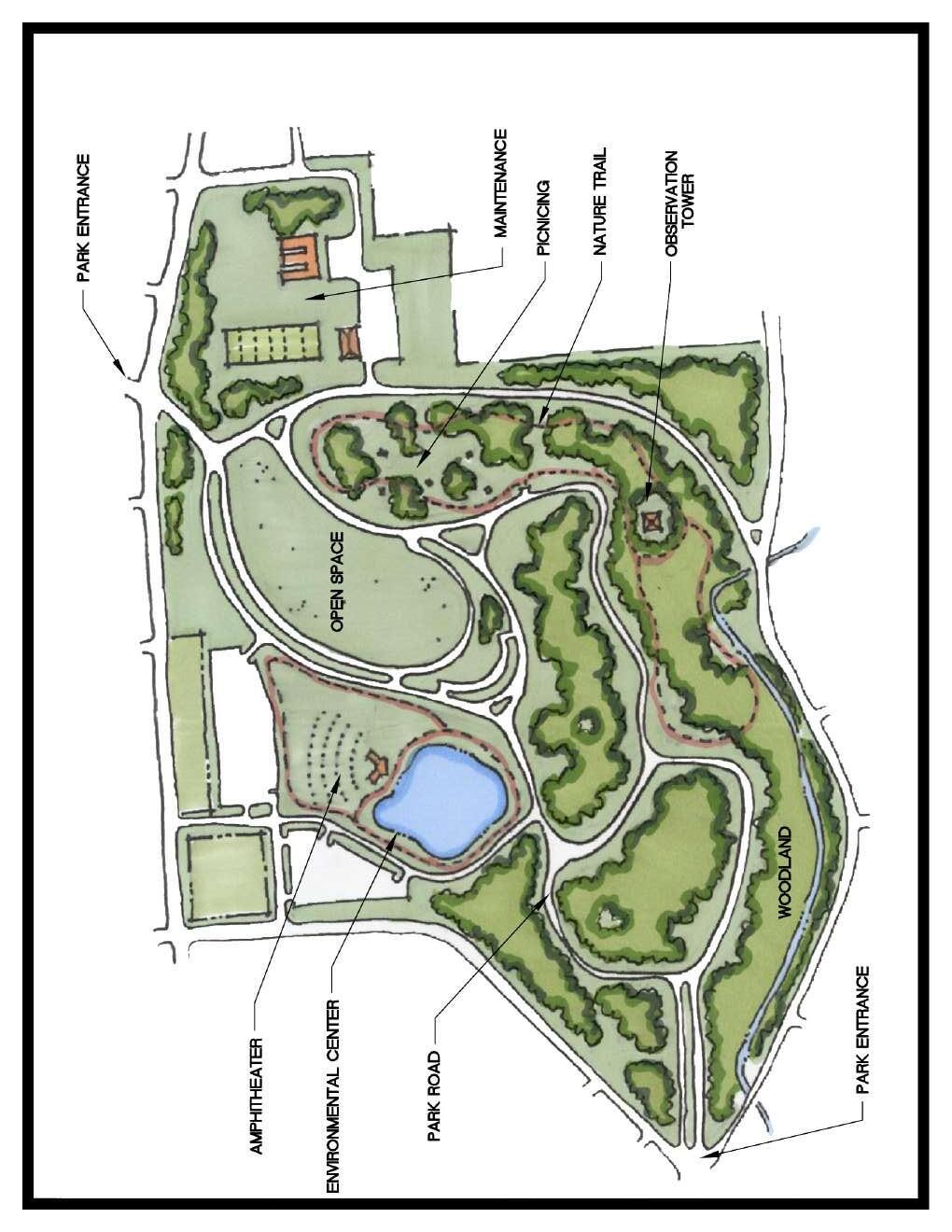
Sports complexes function as the major source of active recreation in the community. Activities are similar to those found in community parks, but are developed to support tournament competition. Passive recreation opportunities are usually limited, but may be found in undisturbed areas, preferably within surrounding buffers.
Sites for sports complexes should be relatively flat to alleviate excessive grading of active facilities. Since most of the land will be developed for athletic fields, sites without significant vegetation or natural features are acceptable, and in some cases may be preferred. Sites should be accessible from major thoroughfares. Direct access to residential areas should be limited and buffers, where adjacent to residential areas, should be provided.
Listed below are standards for developing sports complexes:
Service Area: 3 to 5 mile radius
Acreage/Population Ratio: 2.0 acres per 1,000 persons
Typical Size: 40-80 acres
Typical Facilities:
Playground
Basketball Courts
Tennis Courts (lighted)
Tournament Level Tennis Facilities
Volleyball Courts
Multi-purpose Fields
Tournament Level Soccer Fields
Picnic Shelter with Grills
Picnic Tables with Grills (not under shelter)
Nature Trail
Benches or Bench Swings
Restroom/Concessions
Parking
Service Yard
Tournament Level Baseball/Softball Fields
Alternate Facilities:
Recreation Center
Amphitheater
Tennis Center Observation Decks
Running Track
Development of sports complexes typically falls within the responsibility of the county or municipal agency.

Community parks provide for the recreation needs of several neighborhoods or large sections of the community. A range of facilities is typically provided and may support tournament competition for athletic and league sports or passive recreation. These parks also present opportunities for nontraditional types of recreation. Fifty percent of the community park site should be developed for passive recreation. These relatively undisturbed areas may serve as buffers around the park and/or act as buffers between active facilities.
Community park sites should have varying topography and vegetation. Forested areas should have a variety of tree species. Cleared areas should be present for siting active recreational facilities. One or more natural water feature(s), such as a lake, river, or creek, are desirable in community parks. Parkland should be contiguous and strategically located in order to be accessible to all users within the neighborhoods it serves.
Development of these parks should be based upon the following standards:
Service Area: .5 - 3 mile radius
Acreage/Population Ratio: 3 acres per 1,000 persons
Typical Size: 20-75 acres
Typical Facilities:
Recreation Center Picnic Tables with Grills
Basketball Courts
Tennis Court (lighted)
Baseball/Softball Fields (lighted)
Benches or Bench Swings
Nature Trails
Restroom/Concessions
Multipurpose Fields Parking
Soccer Fields (lighted)
Playgrounds
Swimming Pool Volleyball Courts
Amphitheater Disc Golf
Observations Decks Lakes
Picnic Shelters
Paddle Boat/Canoe Harbor
Picnic Shelters with Grills Fishing Piers/Boat Docks
Fifty percent of the community park site should remain undeveloped for passive recreation/open space. Specialty facilities may be added to or substituted for other facilities depending on community need or special site characteristics.
Development of community parks may fall within the responsibility of the municipality or the county agency.

Neighborhood parks provide the basic unit of the park system. These parks are usually located within walking distance of the area serviced and provide a variety of activities of interest to all age groups. While their small size requires intense development, fifty percent of each site should remain undisturbed to serve as a buffer between the park and adjacent land users.
The standards for neighborhood park development are as follows:
Service Area: .5 to .75 mile radius to serve walk-in recreation needs of surrounding populations
Acreage/Population Ratio: 1.5 acres per 1,000 persons
Typical Size: 5-15 acres
Typical Facilities:
Playground Picnic Shelters with Grills
Court Games Picnic Tables with Grills (not under shelter)
Informal Play Field Benches or Bench Swings
Volleyball 50% of Site to Remain Undeveloped
Trails/Walkways Parking (7-10 spaces)
Where municipal jurisdiction is available, neighborhood parks are typically developed by the municipality.

The trend in public agencies is toward joint use. Through joint use both schools and parks benefit from shared use of facilities and valuable land resources. The school park concept maximizes the joint use objective and provides a planned facility that maximizes public funds. The school park concept typically varies depending on the school. The elementary/middle school provides the ideal setting for a neighborhood park, while the middle/high school follows the function of a community park or youth sports complex.
Service Area: Varies depending on school type and park type
Desirable Size: Varies depending on school type and park type
Typical Facilities: Varies depending on school type and park type
Development of school parks may fall within the responsibility of the municipality or the county agency.
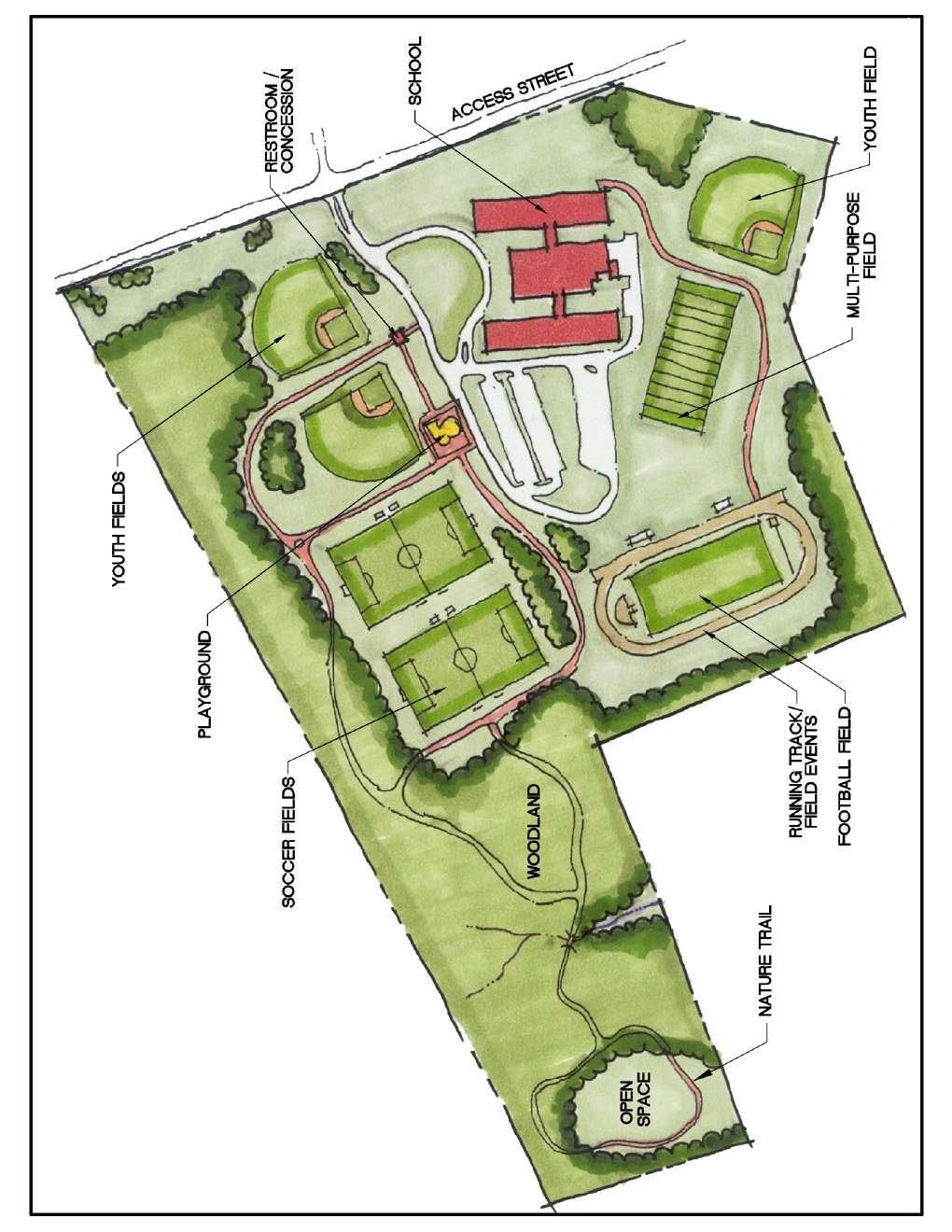
Mini parks are the smallest park classification. These parks are located within walking distance of the area serviced, and they provide limited recreational needs. Mini parks’ small size requires intense development and allows little to no buffer between the park and adjacent land users is provided.
The standards for mini park development are as follows:
Service Area: .25 mile radius to serve walk-in recreation needs of surrounding populations
Acreage/Population Ratio: .25 acres per 1,000 persons
Typical Size: 1-4 acres
Typical Facilities:
Playground
Picnic Tables with Grills (not under shelter)
½ Basketball Courts Benches or Bench Swings
Open Play Area
Landscaped Public Use Area
Where municipal jurisdiction is available, mini parks are typically developed by the municipality.

Greenways provide an important component of the overall park system. They:
•
•
•
•
•
Provide links between park components.
Emphasize harmony with the natural environment.
Provide safe pedestrian movement.
Provide resource based outdoor recreational opportunities.
Enhance adjacent property values.
Greenways are very similar to natural resource sites; the primary difference is the emphasis on pedestrian trails found in the greenway system.
Desirable Size: Greenways form corridors that vary considerably in length. Widths of these corridors vary as well, although a 50’ width is generally considered a minimum.

The first step in establishing a park needs assessment for the City is to establish standards for park and facility development. These standards are based on a review of standards used by other agencies of similar size and a review of standards now (or currently) suggested by national and state associations.
Table 3-1 provides information on standards used by other agencies/associations in the development of parks. The final two columns on this table reflect the local standards that were used as part of the City’s 2000 Comprehensive Plan, and the standards utilized in the development of this plan. Standards proposed for use in developing this plan are very similar to standards used in 2000.
Utilizing these standards, Table 3-2 illustrates the park acreage requirement for the City of Greenville Recreation and Parks Department service area. The acreage requirement is based on the population ratio method (acres of park land per 1,000 population) established for each park. The current population for the City is approximately 72,000 and the 2020 projected population is 106,000 (see Section Two).
Based on this projected population, the City of Greenville Recreation and Parks Department will need to add several hundred acres of additional parkland over the planning period (2008-2020) as outlined in Table 3-2 Total “Park Sites and Acreage Needs Per Park Classification”. During that period, the City should develop the following additional parks:
14 Mini Parks
7 Neighborhood Parks
2 Community Parks
Section Four defines the City’s need for new parks in greater detail.
Minimum standards for recreational facilities (i.e., ballfields, courts, picnic shelters, etc.) proposed for the Department were developed in accordance with the industry guidelines established by the NRPA and the NCDENR and from input gained during the public meetings, telephone survey, and the interviews with local stakeholders. These standards, identified in Table 3-3 “Standards for Public Facilities”, and discussed in greater detail in Section 4, are the minimum recreation facility standards that should be used in establishing a needs assessment for the city.
Based on these standards, the number of public facilities needed in the park system through the planning period (2008 to 2020), are identified in Table 3-4, “Current and Projected Facility Needs” and summarized below:
*No additional sites required.
*The City of Greenville has three (3) sports complexes that provide multiple facilities/ fields, but are extremely small. Based on acreage per population assessment, there is a need for additional acreage, but with three (3) existing sports complexes, no additional complex is needed.
**Improvements to Phil Carrol Nature Preserve would provide the second regional park.
The table below provides a listing of national and state standards commonly used in the development of recreation facilities. The final two columns reflect standards recommended specifically for the City of Greenville.
Utilizing the standards for facility development identified in Table 3-3, this table identifies facility needs (current and projected) for the City.
*Each playground contains 3-4 play activities.
** City should consider participation in the joint agency development of a competition pool.
The Greenville Recreation and Parks Department is a well established department. Its recent award as Sportstown, USA, a Sports Illustrated magazine recognition of the nation’s top fifty recreation programs, is evidence of the Department’s dedication and professionalism. The Department offers the citizens of Greenville many programs in organized team sports, and has developed a number of special use facilities (Walter L. Stasavich Nature Center, Bradford Creek Golf Course, Aquatic and Fitness Center, Extreme Park, etc.). These facilities provide the citizens of Greenville (and Pitt County) with a wide variety of active and passive recreation.
Greenville is a rapidly growing and changing community. The expansion of East Carolina University and the associated growth of Pitt County Memorial Hospital, have spurred an increase in population and an influx of new ideas and a diversity of lifestyles. In the next twelve years, the City’s population will increase significantly. This rapid growth will result in the continued urbanization of Greenville, and much
City of Greenville
Comprehensive Recreation and Parks Master Plan

of Pitt County, and will give rise to a broadening of citizen expectations with regards to recreation and parks. The citizens of Greenville recognize the importance of both recreation and parks (and open space), and they expect civic leaders to take a lead role in ensuring that park needs are met. As Greenville continues to grow over the next decade, land for parks, greenways, and open space will become scarce, particularly in tracts with adequate acreage for neighborhood (8-10 acres) and community (40-70 acres) parks. Available land will increase in cost and, as illustrated in Section Three, there will be needs for both park acreage and recreation facilities as the population grows.
Greenville’s ten year park needs are significant. By 2020, over twenty new parks and miles of greenways will be needed, and many of the Department’s older parks will require major renovations. In addition to these park needs, there will be a need for several special use facilities (aquatics facilities, recreation centers, gymnasiums, etc). Most of these park and recreation facilities will require land acquisition as well as development capital.
The City of Greenville is not alone in the mission to provide parks and athletic facilities to the community. In addition to its classrooms, Pitt County Schools offers students a wide range of athletic facilities. While there is some joint use of existing facilities, the exploration and expansion of joint use opportunities would benefit taxpayers.
Pitt County, as part of its school system, offers citizens programs and facilities through Community Schools and Recreation. The Towns of Farmville, Winterville, and Ayden all offer park and recreation programs through a full time director at several parks. The Towns of Winterville and Ayden offer park and recreation departments. In addition to these County and municipal facilities and programs, the State of North Carolina offers several state parks within an hour’s driving time of the city.
All of these governmental recreation providers offer the citizens of Greenville facilities and services that influence their demand for facilities and programs.
Each of these agencies should be considered as the City of Greenville develops its proposals and recommendations for future parks. Likewise, each of these agencies should meet on a regular (semiannual) basis to discuss park and recreation issues and share information about future initiatives.
Another major player with the mission of improving citizens’ health and quality of life is the University Health Systems of Eastern Carolina and its flagship hospital, Pitt Memorial Hospital. The City should look for opportunities to partner with the hospital in the promotion of healthy lifestyles.

The private sector also plays an important role in providing recreational opportunities throughout Greenville. These facilities include championship golf courses, numerous swim and tennis clubs, health clubs, two Boys and Girls Clubs, and the health facilities offered at Viquest. While most of these facilities are not available for free, they are meeting the recreational and fitness needs for many residents and reduce the demand for some public facilities. In addition, the private sector may play a role in providing recreation facilities to residents through potential public/private ventures. Public agencies are linking with private vendors to provide recreation opportunities in many communities
throughout North Carolina. Examples of public/ private joint ventures may include health/fitness facilities, swim clubs, and RV camping facilities.
This plan addresses the need for providing parks with both passive and active recreation opportunities. “Passive recreation”, such as walking, hiking, and picnicking, typically accommodates the need to preserve green space and allows people to experience nature first hand. “Active recreation” includes activities such as softball, baseball, soccer,
and other physical (indoor and outdoor) activities. These types of recreational activities have facilities that are usually provided at sports complexes, community parks, recreation/community centers, and school sites.
To determine specific park and recreation recommendations for the City of Greenville, it is essential to clearly define how the City will interface with the other recreational providers in the community. This cooperative effort will eliminate duplication of facilities and services. The proposals and recommendations of this Master Plan are established based on what is anticipated each recreational provider will offer through the twelve year planning period (2008 - 2020).
Several state parks (Goose Creek, Pettigrew, and Cliffs of the Neuse) are within a relatively short drive of Greenville. It is anticipated that the State of North Carolina will continue to maintain and operate all state parks within the region. The City, along with other nearby government agencies, should provide a unified message to the State on their interest to see these parks enhanced to their utmost potential. This may include the expansion of facilities and recreational opportunities. The State should continue to offer a variety of recreational facilities and programs on a regional basis. In
addition, the State should be the provider of regional state parks that include opportunities for camping, fishing, biking, and special facilities of regional and statewide interest.

Pitt County Community Schools and Recreation is a collaborative effort by the Pitt County Board of Commissioners and the Pitt County Board of Education. This office coordinates the use of facilities at thirty-five schools, provides avenues for volunteering, offers recreation programs for citizens of all ages, works with agencies throughout the county and North Carolina coordinating after school programs at twenty schools, and collaborates with schools and communities to develop school parks.
While relying heavily on existing school facilities for program space, they opened their first recreation center in 2005 and are currently developing a twenty-three acre county park with a softball field, multipurpose fields, and a quarter mile trail. Future improvements will include a playground, basketball courts, and nature areas. In addition to this county park facility, Community Schools and Recreation, through its capital outlay program, assists local communities in developing recreation facilities on school grounds.
The services and facilities provided by Community Schools and Recreation serve many needs and should be a continued priority for the County. As evidenced by the county-wide survey, there is a need and demand for parks throughout Pitt County. This demand is evident in many of the City’s parks and programs and is reflected in the enrollment by county residents in city programs.
City and County recreation professionals should work closely together to minimize duplication and explore opportunities for joint development and use of facilities. An example of that cooperative operation is current discussions regarding connecting county trails/greenways with City trails and greenways.
The Greenville Recreation and Parks Department is not the only recreation provider in Pitt County. In addition to Pitt County Community Schools and Recreation, the Town of Farmville has a full time recreation director and offers park and recreation programs through both indoor and outdoor facilities. The Towns of Winterville and Ayden also provide municipal recreation departments. All park and recreation agencies operating within the county should communicate with each other in an effort to minimize duplication and maximize cooperative planning.
local taxpayers. The development of duplicate facilities by those entities would constitute a waste of public funds. A shortage of affordable land and rapidly increasing construction costs are reasons enough for encouraging the efficient use of land and tax revenue. Combining resources allows for greater potential in the development of school and recreation facilities that neither entity is likely to afford if pursued independently. Other potential advantages of joint development and management include:
The Greenville Recreation and Parks Department has a tradition of collaborating with other agencies and organizations in the delivery of quality leisure experiences and the development and management of parks and recreation areas and facilities. The City also has a tradition of partnering with Pitt County Schools in the development of outdoor facilities that serve the needs of both the schools and citizens as public park facilities.

The justification for the creation of joint use agreements is based on the premise that the majority of costs for developing and operating schools and recreation facilities come from the same source,
The development of centralized public facilities
• usually requires less land than would be required if the schools and the parks department were to develop separate facilities. The creation of a Capital Facilities Review Committee for Recreation and Parks would be a very positive step in helping to assure the coordination and cost-effectiveness of any new facilities.
Centralized locations for city services (including
• schools and parks) allows for the convenience of all citizens, particularly parents, by facilitating their children’s participation in various education and recreation pursuits.
Centralized school/park developments eliminate
• the duplication of maintenance functions and result in overall cost savings.
Many of the outdoor areas and facilities
• needed for schools are also necessary for park and recreation services. Partnering in the development and management of facilities minimizes the duplication of land acquisition and development needs and represents an efficient use of public resources
Joint developments are eligible for grants
• from the North Carolina Park and Recreation Trust Fund (PARTF). Coordination of PARTF applications also helps avoid submission of competing projects in Pitt County.
School/Park partnerships encourage the
• development of positive after-school and weekend enrichment activities focused on the development of the “whole child”.
Park systems usually have the resources for
• developing and maintaining higher quality sports fields than can be found in most school systems.
Joint use agreements between local park and recreation agencies and school systems are very prevalent across the country. Examples of school/ park and recreation joint use agreements in North Carolina can be found in Cumberland, Scotland, Watauga, Wake, and New Hanover counties.
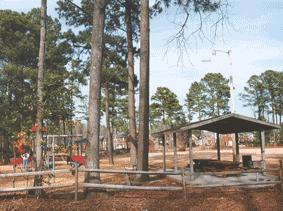
With all of the advantages, Greenville should work diligently to ensure joint use agreements are enacted and maintained wherever feasible.
Greenville is home to one of North Carolina’s finest health care systems. With its flagship facility, Pitt Memorial Hospital, University Health Systems of Eastern Carolina provides residents of Greenville and the surrounding region with outstanding health care. Recent studies on obesity and healthy lifestyles have made it apparent that a community’s health is linked to regular physical activity. Many of these activities are offered by the City’s Recreation and Parks Department.
With this shared mission of improving the community’s health, there are many opportunities where the Hospital and Recreation and Parks Department could work together to assist citizens in achieving a more active lifestyle. The Department and Hospital have already begun general discussions about how this might occur. These discussions should continue to explore cooperative efforts/ programs.
The City of Greenville, through its Recreation and Parks Department, currently affords its citizens a variety of recreation opportunities with over twenty parks. These parks provide opportunities for both active and passive recreation. The offerings of the Greenville Recreation and Parks Department are varied. There is a nice balance between large parks (regional and community) and the smaller “walkto parks” (neighborhood and mini). The City also offers an array of special use facilities in addition to these more traditional park types.
The majority of the City’s parks are well designed and maintained, and are in relatively good condition. Several of the parks are older facilities and could be significantly improved (both in appearance and function) by redesign and/or renovation. Likewise, the City owns several undeveloped parcels that need facility development if they are to reach their true park and recreation potential.
While the City’s existing parks provide a solid foundation of recreation facilities and green space, there are a number of areas where expansion and improvements are needed. This is especially important if Greenville is to keep pace with its rapid population growth and land development.
One of the most important roles the Recreation and Parks Department can play in the future of the community is the preservation of green space and the protection of riparian areas. The City’s Community Development Department, as well as many other public and private agencies, recognizes the importance of preserving green space in a rapidly urbanizing community. Greenville’s Recreation and Parks Department can preserve some of the valuable green space that is rapidly disappearing through the acquisition of land for parks and greenways.
In order for the City of Greenville to provide the parkland and facilities that will be required, it must work in conjunction with other agencies in
the community. This collaborative effort should include working with the Pitt County Community Schools and Recreation Department and adjacent municipal departments to minimize duplication of facilities by developing and maintaining joint use agreements for school facilities.
Through the planning and public involvement process, the standards established in the 2000 Parks and Recreation Master Plan have been updated to reflect current community demand. These standards are defined in Section Three “Standards and Needs Assessment”. With these standards as a backdrop, the following recommendations are made for future park development:
Regional parks are typically large, passive-oriented parks that highlight and utilize a unique natural feature in a community. River Park North is an example of a regional park. Located across the Tar River from the downtown area, this park contains over 448 acres of land and water and provides a variety of passive recreation opportunities. In addition to River Park North, the Phil Carrol Nature Preserve provides a second undeveloped regional facility for the preservation of open space, passive recreation and environmental education. Improvements to
both facilities would greatly expand the public’s access to the Tar River and to undeveloped open space. While River Park North has been developed with a variety of passive recreation opportunities for public use, recent land acquisition and changes in needs have resulted in a need to look at the park’s current and future facility needs. A master plan for River Park North should be developed. As part of this master plan, pedestrian access across the river to the City’s downtown area should be studied.
The Phil Carrol Nature Preserve needs infrastructure improvements to allow public use of this property. The City should develop a master plan for this property that will provide for public use without degradation of the site’s natural features. As with all master plans, the planning process should incorporate public input.
Once the Phil Carrol property has been improved to provide public access, these two regional parks, along with the state parks found in the area, will provide Greenville with adequate passive recreation opportunities.
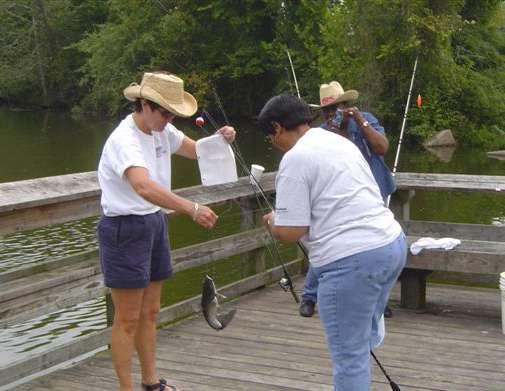
Community parks are perhaps the most important component of a municipal park and recreation system. These parks are typically large enough to provide valuable active recreation opportunities while allowing portions of the park to be left undeveloped for open space and passive recreation.
Currently the City of Greenville has five community parks (H. Boyd Lee, Elm Street, Evans, Greenfield Terrace, and West Meadowbrook). The majority of these parks are located within the City’s central core. These five parks provide a core component of the City’s park and recreation facilities. Each of these parks should be studied to ensure they are meeting current community needs. West Meadowbrook Park, which is one of the City’s larger parks, is relatively undeveloped. A master plan should be developed for this park to maximize use. Greenville’s community parks were developed under Fishing at River Park North.
older NRPA standards that recommend these parks be 20 to 75 acres. This standard has resulted in the development of relatively small community parks. The current NRPA standard for community parks is 40 to 100 acres. This additional acreage allows for both active and passive recreation.
The national and state standards for development of community parks is five to ten acres per 1,000 population (see Table 3-1). The 2000 Master Plan established a criteria of three to five acres per 1,000 population for community parks. This Master Plan utilizes the more conservative standard of development (three acres per 1,000). Even using this more conservative number, there is a current need for eighteen acres of additional community park land in the city; by 2020 that need increases to 120 acres. At a size of + 50 acres per park, this standard would indicate two additional community parks will be needed in the next twelve years.

One of these community parks should be developed on the City’s property on Highway 33 (10th Street Extension). This site received tremendous support for park development at all of the public meetings. At 120 acres, this site is large enough to allow active recreation (ballfields), while allowing much of the site to be preserved as public open space. This site would also provide an ideal setting for the City’s first star gazing area.
Finally, a note about athletic fields in community
parks. Based on the small size of the City’s sports complexes (see section below), the City should focus its athletic field development in many of its community parks (existing and proposed). Through the development of multi-field complexes in these community parks, the City will be able to develop tournament level facilities that will not only provide for league play, but can also be used for tournament play. Through these tournament level facilities, economic impact might be realized.
Sports complexes are larger athletic facilities where many clusters of athletic fields can be developed. Usually 80 to 100 acres, these multi-field complexes can meet much of a community’s demand for league play and often provide a tournament level facility for regional play. Currently the City has three sports complexes (Bradford Creek Soccer Complex, Perkins Baseball Complex, and Guy Smith Park and Stadium). While each of these sports complexes provide excellent athletic facilities that are meeting much of the City’s league-play needs, they are too small to provide the type of venue that will draw regional tournament play. This limits the economic impact they have for the community. Plans for each of these parks should be reviewed to identify improvements that can enhance playability and use. Particular emphasis should be placed on adding infrastructure at Bradford Creek Soccer Complex.
Utilizing a very conservative standard for the development of sports complexes (two acres per 1,000 population vs. five to ten acres per 1,000 population used by state and national guidelines), there is a demand for 144 acres of additional sports complex facilities. At a recommended size of 40 to 80 acres per facility, this standard results in a need for three sports complexes. Currently the City has three sports complexes. While the acreage of these complexes is small, the number of facilities appears to be meeting demand.
Neighborhood parks play an important role in providing both active and passive recreation in a community. Usually in the 5 to 15 acre range, these
parks are large enough to include both active and passive recreation opportunities, but small enough to allow for a wide geographical distribution.
The City has six neighborhood parks (Andrew A. Best Freedom Park, Jaycee, Greensprings, South Greenville, Thomas Foreman, and Paramore), but still has much work to do in this area of neighborhood park development. The desire for neighborhood parks was expressed in every public meeting and in many of the stakeholder interviews. The 2000 Recreation and Parks Master Plan established a standard for development of neighborhood parks of one and a half acres per 1,000 population (see Table 3-1).
Maintaining the 2000 criteria for neighborhood park development (1.5 acres/1,000 population) results in a current need for an additional + 36 acres of neighborhood park land. Assuming eight to ten acres per park, this standard indicates a current demand for three new neighborhood parks. By 2020, this need will increase to seven neighborhood parks.
New neighborhood parks should be spaced throughout the city in areas currently not being served by a neighborhood park. Typically, neighborhood parks have a half mile service radius, locating them one mile apart. One obvious location for a new neighborhood park is the land adjacent
to the new off-leash dog park the City acquired as part of the FEMA buyout program. During the public meetings, several people expressed a desire for development of a park on this site; calling it a potential River Park South.
In addition to the proposed new neighborhood parks, several of the City’s existing neighborhood parks need expansion and/or improvements. Particular emphasis should be placed on improving Thomas Foreman Park and South Greenville Park. Master plans outlining proposed park improvements/ expansion should be developed for both of these parks.
Mini parks are the smallest of the park types. These parks typically range in size from one half to four acres and provide a limited range of activities (playground, picnic shelter, benches, etc.). There are six mini parks (Belmont/Dream, Hillside, Peppermint, Tobacco Road, West Haven, and Woodlawn) containing approximately five acres of parkland within the Greenville Recreation and Parks system.
Many municipal park agencies are placing less emphasis on mini parks because their small size limits their recreational use and these small parks are geographically dispersed requiring considerably more maintenance effort and cost than fewer, larger parks. Even with this understanding, the demand
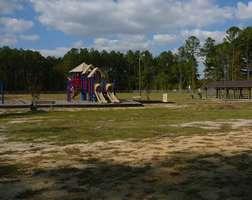

for small mini parks was evident in all of the public meetings and stakeholder interviews. Based on this strong desire to develop “walk to” parks and utilize the standards of development that were identified in the 2000 plan (a quarter acre per 1,000), there is a current need for eleven acres of additional mini parks or eight new parks. By 2020, this demand will grow to almost nineteen and a half acres with a need for fourteen new mini park sites.
The most popular form of outdoor recreation in the nation is walking. This popularity was reflected in the survey that was conducted as part of this planning study and in comments made during the public meetings. Greenway trails are typically offroad trails that meander through neighborhoods and natural areas providing transportation corridors and recreational opportunities for walkers, joggers, roller bladers, and cyclists. The trail surface can either be natural or paved and is normally eight to ten feet in width. In addition to providing environmental protection and recreation opportunities, greenways can produce economic development. The North Carolina Department of Transportation Division of Bicycle and Pedestrian Transportation recently conducted a study on a bicycle trail constructed along the northern Outer Banks region. This study determined that a $6.7 million investment in offroad bike paths and shoulder improvements produced an estimated $60 million annually in economic benefit. In addition, the study found that:
• factor to many tourists visiting the region.
Bicycle facilities in the area are an important
Investments in the bicycle facilities improved
• the safety of the area’s transportation system. Bicycle activities include the benefits of health,
• fitness, quality of life, and the environment.
Greenways also offer a valuable alternative to automotive transportation. A greenway trail provides a linkage between communities, schools, churches, businesses, and parks. A proposed pedestrian connection across the Tar River between the downtown area and River Park North can provide a valuable link between the northern and southern parklands.
In 2004, the City developed a greenway master plan to identify corridors for development, establish a budget for land acquisition and construction, and create a plan of action (with schedule) for greenway development. This plan recommended 42 greenway projects with over 102 miles of proposed greenways and/or sidewalk trails.
The implementation of this plan, and the construction of the initial phases of a greenway system, should be one of Greenville’s highest park improvement priorities. Walking, jogging, and biking (all activities that occur on greenways) ranked extremely high in all of the public input responses.
Greenways should be developed in conjunction with other park and recreation providers in the area (ECU and Pitt County Community Schools and Recreation Department) to ensure it is coordinated with other planning efforts and that there is continuity between plans.
The development of greenways was originally under the direction of the Public Works Department. The responsibility for greenway development has been moved to Greenville’s Recreation and Parks Department. While the Public Works Department should be commended for its leadership role in developing the Greensprings Mill Greenway, City Greensprings Mill Greenway

Administration showed true leadership and vision by moving the responsibility of greenway development to the Recreation and Parks Department.
To facilitate this level of park and greenway planning, the Recreation and Parks Department should add technical staff that can facilitate this type of planning. A park and greenway planner or landscape architect should be added to the Recreation and Parks staff.
The need for bikeable roads and the development of greenways for biking was repeatedly mentioned in many of the interviews and all of the public meetings. Many people sited the lack of bike lanes as a citywide problem. With the focus on healthy lifestyles, the environment, and alternative transportation, there is a great need to develop a city-wide bike plan. A special task force has recently been established to facilitate a community wide bike plan. The Recreation and Parks Department should be engaged in this planning process.
The City should encourage the State to include bike lanes whenever roadway improvements are made or new roads constructed. This plan should also become part of the City’s subdivision process, where developers are required to accommodate bicycle (and pedestrian) traffic in the roadway improvements they construct as part of the development process.
The City should consider tapping into the federal government’s SAFETEA program which funds nonvehicular transportation projects that encourage alternative means of transportation. These funds have been used to construct bike lanes and greenway trails in communities throughout North Carolina.
The development of a city-wide greenway, along with a city-wide bike plan would provide an important amenity that would benefit residents. As documented in the NCDOT study on bicycle facilities along the northern Outer Banks, the development of a bicycle/pedestrian trail system can have a
significant economic impact on a community.
A city task force on improving bikeways in general has been established. A representative from the Recreation and Parks Department (possibly the proposed park planner) should be a participant in this task force and the Department should be a strong proponent of the development of safe bikeways. This need was expressed in the survey, interviews and in all of the public meetings.

While the focus of the previous recommendations has been on the acquisition and development of new parks, there is also a need to improve/expand facilities at a number of the City’s existing parks. As part of the ongoing planning and budgeting process, the City’s Recreation and Parks Department annually establishes a list of capital improvement projects. This list of capital improvement needs is then used by the Department and elected officials to establish yearly capital improvement budgets. Many of the projects currently listed on the City’s Capital Improvement Plan have been included in the Capital Improvement Program listed in Table 5-1.
As noted in previous sections, master plans should be developed for many of the City’s existing parks and recreation buildings. Parks/facilities that
warrant special study include:
•
•
•
•
River Park North
Phil Carrol Property
Thomas Foreman Park/Eppes Center
Greenfield Terrace Park
• Park Maintenance Facility
South Greenville Park/Recreation Center
•
Based on the previous recommendations on park development, the City of Greenville should construct over twenty parks, add several recreation buildings, expand its greenway trail, and renovate several of its existing parks by the year 2020. The improvements that will be made as part of these renovations and expansions will add many new facilities to the parks inventory. The City should consider the list of facility needs established in Section Three and described in greater detail below:
Youth baseball is very popular in North Carolina. The 2000 Master Plan established an extremely aggressive criteria for the development of youth baseball fields (one field per 4,000). Based on this standard for youth baseball, the City exhibits a demand for this sport greater than that expressed in the national, state, and other similar municipal department standards. While it is apparent there is considerable demand for the sport, reducing the standard for field development should be considered. With this understanding, the standard for facility development of youth baseball fields has been set at one field per 6,000 people. This is still significantly greater than the national and state standards (one field per 10,000). Utilizing this standard for development results in a current need for four additional youth baseball fields, with ten additional fields needed by 2020. In addition to constructing new fields, the City should consider lighting more of its existing fields.
Men’s adult softball has traditionally been a very popular sport in North Carolina, and NRPA and NCDENR standards (one field per 5,000 people) reflect that popularity. While the sport is still popular, there has been some shift in demand of men’s adult softball in the past few years. Based on a standard of one field per 6,500, the City has a current need of three softball fields with a further need of eight new fields by 2020. Some of these fields should be designed to facilitate co-ed play.
Over the past five to ten years, the popularity of adult baseball has waned. While most communities include adult baseball fields in their facilities, the sport does not carry the popularity it once held. The City’s 2000 Master Plan recommended a standard of one field per 20,000 people for the development of adult baseball fields. Utilizing this standard of field development, the City will have a need for three additional adult baseball fields by 2020. Whenever possible, utilization of school facilities for adult baseball will allow the City to focus resources in other areas.
It should also be noted that changes in demand have now placed additional emphasis on women’s softball. Either some of Greenville’s future softball fields should be designed to accommodate this new area of play, or some of the existing fields should be retrofitted to allow for women’s play.

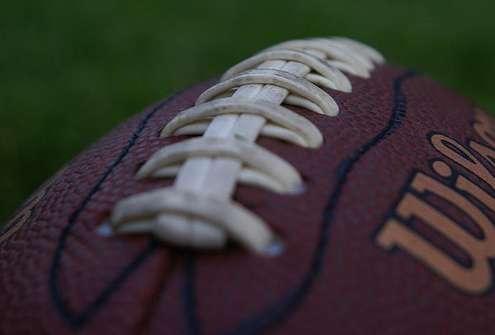
Football’s popularity has been influenced by the emergence of soccer and (most recently) lacrosse. With this understanding, the standard for development of football fields is one field for every 20,000 people within the service community. This standard results in a current demand for three football fields. Based on this very conservative standard, Greenville should consider building four to five additional football fields over the next ten years.
is a need for ten to twelve additional soccer fields over the next decade. In addition to developing more fields, there are facility improvements to be made at Bradford Creek Soccer Complex that will enhance play and use of this facility. These improvements include construction of additional picnic shelters, lighting additional ballfields, and constructing trails.
As with other sports facilities, the City should consider lighting its soccer fields. Lighting fields doubles the effective use of the fields.
A final note on soccer. The demand for soccer fields will only continue in the future, and will be made more intense by the new interest in lacrosse. Played on a field very similar to a soccer field (they are slightly larger than soccer fields), lacrosse will increase in popularity and should be planned for as the City reviews its soccer field needs. The new sport should be taken into consideration since play for both sports can be programmed on similar fields. One method to accommodate the variety of field games (soccer, lacrosse, rugby, football) is to develop larger multi-use fields that can be used for play by a variety of field games.

One of the fastest growing sports in America, soccer has surpassed the demand for football in this country. This master plan reflects this demand by establishing a standard of one field for every 6,000 people within the service population. This standard exceeds national and state standards significantly. Since the development of the 2000 plan, Greenville developed the Bradford Creek Soccer Complex, but even with the development of this facility, there
Basketball is still an extremely popular sport in the United States. Played by a variety of ages, and increasingly by females, this sport can be played either indoors or out. The development of outdoor basketball courts cost considerably less than an indoor gymnasium. Currently the City provides
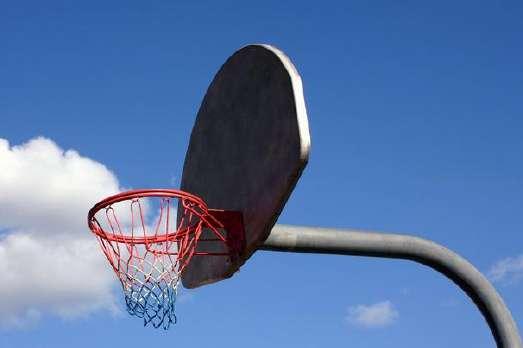
five outdoor and four indoor courts. Based on national and state standards of development of one basketball court per 6,000 people, Greenville currently has a need for three additional outdoor courts. By 2020, that need will increase to nine additional courts.
Outdoor courts are relatively inexpensive to construct and do not require significant space in a park. They do require careful placement because activity around the court is often aggressive and male dominated and does not mix well with other youth activities.

See the section on community centers/gymnasiums for the community’s needs of indoor courts.
tennis center, but instead should be located in groups of two to three courts in neighborhood and community parks.
The national and state standard for development of volleyball courts is one court per 5,000 people. Reducing this standard by half (one court per 10,000 people) would result in the need of four to eight additional outdoor courts. Volleyball courts are relatively small and can easily be added to existing parks.

Tennis has not experienced the same growth and interest as some of the nation’s newer sports (soccer, lacrosse, etc.), but as the baby boomers move into their 50s and retirement, the demand for sports that keep people active without physical contact will increase. This assessment was reinforced as part of the interview with stakeholders.
The River Birch Tennis Center is an excellent facility, but even with this facility, there is a need for additional tennis courts throughout the City. Utilizing a standard of facility development slightly less than the national and state standards (one court per 2,500 people), there is a need for five additional tennis courts. By 2020, this need will increase to eighteen additional courts. These courts should not be constructed as part of another
Like volleyball, there are only limited public shuffleboard courts in Greenville’s park system. This activity provides a recreational outlet and opportunities for social interaction, particularly in the elderly population. The City currently has six shuffleboard courts in Elm Street Park that need improvements. While the national and state standard of one court per 5,000 people seems excessive, the development of some additional courts would provide an excellent activity for the community’s older population. Reducing the national and state standards by half (one court per 10,000 people) will result in a need for four of these game courts. Like volleyball courts, shuffleboard courts are easily added to existing parks.
Horseshoes is a popular pastime for both young and old. The City offers horseshoes at Elm Street Park and River Park North. Based on a development
standard of one court per 10,000 (similar to the standard used for volleyball and shuffleboard), the City will need to construct six additional courts by 2020.
locations for additional playgrounds. Larger parks may warrant more than one playground.
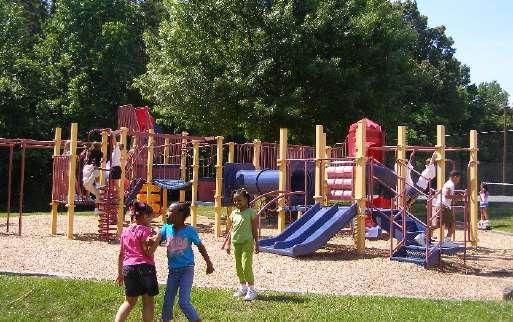
Walking is the number one outdoor recreational activity in the United States. Based on the positive response it received in the public survey (90% indicated they either are currently walking or would like to walk), it is an extremely popular activity in Greenville as well.
With this level of public demand, the development of walking trails should be a priority for future park development. As noted previously in this section, the City should work on implementation of its 2004 Greenway Master Plan. In addition to the greenway, a priority should be placed on walking trail development in all existing and future parks. A paved walking trail is an important component of all park types, and should be provided in all neighborhood and community parks as well as sports complexes.

Picnicking was one of the most popular recreational activities listed by respondents in the city-wide survey. The City currently has twenty three shelters in its park system. Based on a standard of one shelter per 3,000 people, there is a need for twelve additional shelters by 2020.
The City has sixteen playgrounds in its parks. As new parks are developed, the City should look for
The Tar River, and its system of natural streams, provides the City of Greenville with a wonderful opportunity to develop a blueway canoe trail similar to the greenways that have been started. This blueway stream system should include vehicular access/parking, canoe/kayak input areas, and designated canoe trails with maps and markers. The development of a blueway trail along the Tar River would provide a unique and valuable park facility for residents, and potentially provide a tourist destination with economic impact benefits.

Walking, jogging, and hiking ranked as the number one activity of those interviewed as part of the survey expressed an interest in biking. As discussed earlier in this section, the City should expand opportunities for biking through the development of a greenway trail system, including paths suitable for biking in existing and future parks, and through encouraging NCDOT to develop roads with bike lanes or wider shoulders to accommodate bikers. The Recreation and Parks Department should work with other stakeholders, including the Bicycle Friendly Community Task Force, to help promote and facilitate new bikeways throughout the City.
Currently the City has one amphitheatre located at Town Common. This facility provides a venue for city-wide concerts and special events. Recent discussion on downtown revitalization and development of a master plan for Town Common could result in improvements to this facility. Any proposed master plan should include provisions for an amphitheatre facility that can accommodate and attract regional events and concerts. The promotion of such regional events can have significant economic impact for the City.
In addition to a large regional amphitheatre, the City should also make provisions for smaller, neighborhood gathering places for plays, small concerts, and other special events. These facilities would provide a small stage and space for gathering in a more informal manner than the large amphitheatre at Town Common.
The City of Greenville currently provides four recreation centers with gymnasiums (Boyd Lee, Elm Street, Eppes, and South Greenville). Two other facilities (Aquatics and Fitness Center and the Sports Connection) provide gymnasiums to those paying a fee. In addition to these public facilities,

there are gymnasiums at the local high schools and middle schools (see section on Joint Use), Viquest, and ECU.
As the city grows, there will be a need for one additional public community center with a gymnasium and one additional community center without a gymnasium within Greenville.
A number of the City’s existing gymnasiums are extremely old and need significant renovations. A plan has been developed for the renovation of the gymnasium at Elm Street Park and efforts are currently underway to convert it into the Drew Steele Center. This project received strong public support in each of the public meetings. The City should continue these efforts until funding can be raised and improvements made. In addition to the Drew Steele Center, the City should begin plans for similar makeovers at Eppes Center and South Greenville Recreation Center.
In the past NRPA and NCDENR provided a standard for pool development of one pool for every 20,000 people. This standard was based on the concept of multi neighborhood or community pools. Today, with the cost of operation and construction of swimming pools, very few agencies develop neighborhood/ community pools to that old standard; instead they typically provide more centralized facilities where one pool may serve a greater population.
Based on input from interviews, public meetings, and the survey, a standard of one pool for every 30,000 people has been proposed.
schools, the hospital, the County, and the City as partners in this facility. Greenville should consider how it can partner in this much needed regional facility.
Currently the City of Greenville offers its citizens two swimming pools (indoor pool at the Aquatics and Fitness Center and outdoor pool at Guy Smith Park).
Based on a standard of one pool per 30,000 population, the City will need to construct one additional swimming pool within the ten year planning period.
In addition to the need for an additional pool, the City should consider building several spraygrounds. Spraygrounds are growing in popularity across the country. In addition to offering a water-based play experience, the play structures, sprays, etc. afford kids of all ages a total play environment and are much more economical to operate than a standard swimming pool. A properly designed, large water park sprayground will also serve as a regional draw to provide revenue to the Department as well as economic impact to the surrounding areas.

There is no competition level indoor aquatic facility in the Greenville region. Based on demand for an indoor competitive swimming facility, there is a need for a regional indoor swimming facility. An effort has been underway for some time to bring multiple agencies together to develop a major indoor facility. Promoters will likely need the
The City of Greenville offers its citizens an outstanding opportunity to enjoy golf through its Bradford Creek Golf Course. This is a relatively new course providing residents with quality facilities and programs. Much of the golf course’s revenues are put back into the facility to reduce debt. This has resulted in minimal reinvestment in course improvements. In the future, greater attention (and funding) will be needed to keep this course competitive with other golf facilities in the area. Improvements like the recent lighting of the driving range are good investments because then can improve golf course revenues.
The City currently has an archery range at Evans Park adjacent to the River Birch Tennis Center. Archery is a skill sport enjoyed by some, but based on the relatively low percentage of people who participate, development of any additional archery areas should not be a high priority.
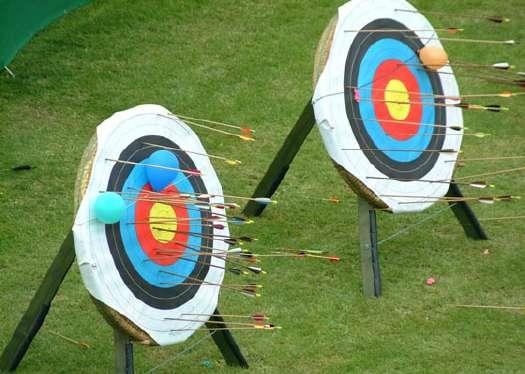
Camping provides an opportunity to enjoy nature and experience social interaction. The City of Greenville offers primitive campground facility at River Park North. While camping is not typically
a recreational activity that municipal agencies provide, River Park North offers opportunities for providing a primitive camping experience. Likewise, the development of the Phil Carrol Property could offer additional campus opportunities. The development of some camp sites at one or both of these parks could introduce this park activity to non-campers and create a connection to the natural environment.
The list of recreational activities developed for this Master Plan is based on national and state standards that have been used in park planning for decades. As noted earlier in this section, these standards are used as a point of reference, with the understanding that each community should develop a set that are unique to their specific needs.
One of the downsides of the national and state standards is that they are not updated often and fail to incorporate newer trends and activities. In the past decade, several new activities have been growing in popularity that should be included in future park development. These activities include:
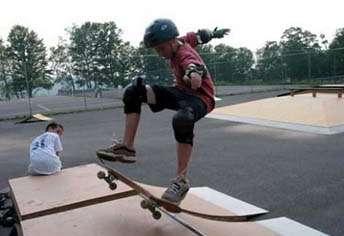
Skateboarding has been popular for several decades. In the past decade, many communities have recognized its popularity and have tried to provide a safe and vandal resistant setting for this creative sport. Greenville is a truly unique community that has attracted a number of nationally recognized extreme sport athletes and has become a haven for BMX, skateboarding, and other extreme sports. To support and foster this activity, Greenville has a skateboard and BMX facility at its Extreme Park at Jaycee Park. While portions of this park receive heavy use, the area designated for roller hockey is currently under-utilized. Alternative uses should be considered for this area of Extreme Park. Likewise, operation of the skate park warrant review. Currently, the facility is supervised and there is a charge for using the facility. Trends in skateboarding park operation have moved away from supervised operation to a more “freeplay” style. The Department, along with the City Attorney, should investigate the feasibility of this type of operation.
With the strong local demand for these facilities, the City should consider improvements to the facilities at Jaycee Park. In addition to this citywide skate park/extreme sports facility, there may be opportunities for smaller skate facilities in neighborhood or community parks.
Skateboard parks can be as simple or elaborate as a community’s budget will allow. The primary goal is to provide a safe, attractive setting for users. Recent litigation has reduced the liability exposure for communities that provide these facilities.
The popularity of disc golf continues to rise. Currently, the City has a disc golf course at West Meadowbrook Park. Additional courses should be considered at new or existing parks.
One of the newest trends in park development, the off-leash dog areas (also known as dog parks), is a response to the nation’s love of pets. Communities throughout North Carolina are now constructing dog parks.

Dog parks take many forms, but are primarily a place within a park where park users can bring their dogs to run, walk, and recreate. They usually include a fenced open area where dogs, accompanied by their owner, are allowed to run free. Often the off-leash dog area is divided into sections for large and small dogs.
Greenville recently opened its first off-leash dog area on a floodway buyout property adjacent to the river. The park has met with outstanding support. The facility is has received tremendous use and has had a very favorable response from users.
Several people at the public meetings expressed the desire to see an off-leash dog area added to one of the City’s public parks.
John L. Crompton, in his publication “Parks and Economic Development”, determined there are four economic development benefits that a community
may derive from park and recreation services. These benefits include:
Attracting Tourists:
• The features and programs that attract tourism to a community include parks, beaches, historic sites, museums, special events and festivals, and athletic tournaments. The majority of these features are provided by public agencies (national, state, local park agencies, etc.).
Enhancing Real Estate Values
• : Research shows people will pay more to live close to natural park areas. These higher property values result in owners paying higher property taxes, which in turn offsets some of the cost for the development parks and preservation of open space.
Attracting Business:
• Quality of life issues influence where businesses locate. Parks, recreation, and open space are an important component of the quality of life equation. Good parks help cities attract and retain businesses. Attracting Retirees:
• A new growth industry for American communities is the retirement population. The decision to relocate by this segment of our population is primarily governed by climate and recreation opportunities. This segment of the population is extremely attractive to local governments because retirees are unlikely to have children enrolled in the local school system and therefore are less of a burden on the community’s tax base.
The City of Greenville has traditionally placed a high value on parks and recreation programs and facilities that provide quality of life improvement. Town Common, River Park North, and Elm Street Park each set a tone of community pride in public parks and reflect the priority the City places on public recreation and open space. Development of this master plan update is further evidence that the City recognizes the importance parks play in the quality of life.
Through these investments in parks over the years, City officials have ensured that Greenville provides the quality of life that helps attract new businesses, enhances real estate values, and provides an
attractive option to the retirement community. The City and the Greenville Convention and Visitor’s Bureau also realize the importance of building and promoting tourism as a means of economic development. The Convention and Visitor’s Bureau is already promoting sporting events in the Greenville region. Currently the Bureau is working to promote tournaments with regional draw in the following sports:
•
•
Softball
Soccer
Baseball
•
• Basketball
There are many more opportunities for attracting economic impact to Greenville through tourism. John Crompton lists the following opportunities for tourist attractions:
Arts
•
•
•
Theaters
Art Galleries
Museums
• Concerts
Performing groups, Music
•
Heritage Places
•
•
Ethnic cultural places
Shrines/churches
• Educational institutions
Historical sites and structures
• Industry factory tours
•
Parks
• State
National
•
•
•
•
•
Regional
Local
Beaches
Theme parks
Recreation
•
•
Events and festivals
Aquatic and coastal areas
• hunting)
Outdoor recreation (e.g., camping, fishing,
Arenas College sports
•
•
•
Professional franchises
Concerts and exhibitions
Many of these activities and facilities are already found within the City. The majority of these potential tourism attractions are in the public realm or are a public/private venture.
The City of Greenville is already embracing economic development through tourism with its tournament level athletic facilities and its regional parks and golf courses. Further expansion of tourism could be realized in the areas of the proposed arts center, a regional natatorium and swimming facility, and the expanded soccer facilities. The expansion of these facilities would provide additional local programming capabilities as well as provide tournament and special events opportunities with tourism and economic impact benefits.
The City should be open to new park facilities and activities that can provide tourism opportunities. Facilities with potential economic impact capabilities include:
•
•
•
•
•
•
•
•
Zoo
Arboretums
Velodrome
BMX track
Ice skating/hockey
Roller hockey
Frisbee golf
Equestrian center
Greater study of these, and other tournament facilities, may be warranted.
The City of Greenville’s Comprehensive Recreation and Parks Master Plan is based upon a review of the community’s character and growth, an analysis of the existing park system, the identification of user needs, the development of recreation standards, and an adherence to stated proposals and recommendations. The plan is intended to be “action-oriented”, designed to provide a framework from which the City’s Recreation and Parks Department can enhance their parks and recreation system.
Instrumental to the implementation of the Master Plan is the identification of adequate funding for land acquisition and park development. Finding adequate funding is particularly difficult in this time of escalating construction cost and land values. These rising costs place an even greater value on planning for the future to meet park and recreation needs.
Comprehensive Recreation and Parks Master Plan
 Sarah Vaughn Field of Dreams
Sarah Vaughn Field of Dreams
Implementing the recommendations made in this Master Plan will result in meeting the future needs for parks and recreation services, as well as preserving open space in the area. The City of Greenville should continue to establish annual budgets on projected capital improvements, staffing, operations and maintenance costs for the Department that not only meet current needs, but also allow acquisition and development for future needs. This action plan is designed to give the City and the Department a realistic approach to financing the proposals and recommendations of this Master Plan.
The Capital Improvement Program for the acquisition, renovation, and development of parks for the planning period was prepared with input from City staff and public involvement. All of the proposed costs are shown in 2008 dollar values. The capital improvement costs include funds for land acquisition, site preparation, site utilities, and facility development as well as estimated planning and design fees.
The Capital Improvement Program can be summarized into the following components:
Department in the coming decade. These issues relate to the manpower and organizational changes that will be required as the Department adds new parks/facilities and hundreds of acres of park land. Likewise, these recommendations address some of the critical operational issues the Department needs to identify as it works to become not only a bigger department, but a better department.
With the expansion of park facilities over the next decade, there will be a need for additional staff to develop, operate, and maintain these new facilities. These anticipated new facilities will require program/operational staff for one new recreation center/gymnasium, one new swimming pool, and several spraygrounds. In addition, two new community parks, seven new neighborhood parks, fourteen new mini parks, and miles of new greenways will require new grounds crews, park supervisors, and administrative staff.
While the development of a true operation and maintenance program for these future facilities is beyond the scope of this master plan study, it is important that the City plan and budget for adequate staff positions for any new facilities that are constructed. Likewise, as these new facilities come on line, the City should actively seek the highest level of programming staff with strong educational experience in the various areas of park and recreation administration.
Table 5-1 “Capital Improvements Plan” shows the costs associated with the capital improvement program (twelve-year planning period). The table reflects the proposals and recommendations as outlined in Section Four of this Master Plan.
In addition to looking at future facility needs of the Department, this Master Plan must also address some of the operational issues that will face the
As part of this planning process, two specific, immediate departmental needs have emerged. First, there is a need for a full time marketing position within the Department. This person will focus attention on promoting to the public the wide variety of activities and programs that are available through the Department and the benefits to the individual and community that these services afford. Through this promotion, citizens will be better served because information regarding programs and facilities will get to the user. The Department will also benefit through greater participation in its programs. This will result in potentially greater revenues. In addition to the
more traditional marketing roles, the Department’s new Marketing Director will lead efforts to develop and energize programs through a park foundation and promote corporate sponsorships of the parks.
A second position mentioned throughout the planning process is the need for a full time park planner. This person will provide valuable project management skills as the Department constructs new facilities, and will offer insight in the design of these new facilities. In light of the park construction that will occur over the next ten years, this position is critical to the success of the Department.
As noted above, the development of new recreation facilities will require additional staff for the Department. These new staff positions will add to the annual operational budget in both staff and equipment costs. The expansion of park facilities will also add significantly to the energy and utility cost of park and recreation facilities. Based on recent increases in energy cost, these operational costs could be substantial. The recommended facility improvements included in this Master Plan will increase the Department’s facilities by 25-35%. Expansion of this magnitude will have significant implications to the operational budget. The Department’s management staff and elected officials must carefully consider the financial impact of each major capital improvement project as projects are considered. No capital improvement project should be undertaken without the commitment of support for adequate ongoing operational funding. Likewise, consideration should be given to the positive economic impacts that some facilities may have on the Greenville economy, and if applicable, their potential for revenue generation.
As noted throughout this planning document, citizens and staff believe Greenville’s parks are well maintained. Currently maintenance operations
for the entire department is based from the Department’s maintenance facility on 3rd Street. Departmental staff does an excellent job providing a quality maintenance program for its existing facilities, but to meet increased demand and prepare for new facilities, the maintenance facility will need significant improvements/expansion. A detailed architectural and site study should be made of the existing facility and a plan for expansion/ improvements made.
As the world’s population expands and environmental concerns over global warming, conservation of resources, and preservation of our fragile natural systems become more apparent, greater environmental responsibility by public and private agencies has become critical. As a government agency, particularly one that is involved with the management of public open space and the improvement of the public’s health, the Recreation and Parks Department should make a sincere and concerted effort to minimize its environmental impact.
With this understanding, the Department should evaluate its maintenance and operational procedures with an intent to minimize waste and environmental impact. Where economically feasible, the Department should look to implement operational procedures that emphasize conservation, recycling, and sustainability. Likewise, as the Department looks to build new facilities, it should consider constructing facilities that minimize environmental impacts, conserve energy, and reuse building materials where possible.
As a starting point for this conversion to a “greener” operation, the Department should establish a committee of operation, maintenance, and construction stakeholders to study the options available and develop a plan for becoming “greener”.
The City’s Recreation and Parks Department has strong public support for parks, programs, and services. Even with this support, innovative measures will be required if the City is to keep up with the needs of one of the fastest growing urban areas in the state. The proposed additional facilities and expanded operations will require the City to seek funding dollars from a variety of sources. Greenville will need to create a combination of revenue sources to meet the future needs of local residents. The following funding sources are provided to help the City evaluate funding options.
Upon adoption of the Master Plan, the Department, with input from civic leaders, should consider the establishment of a revenue plan. A revenue plan incorporates all available funding resources in a community, prioritizes them, and puts each option into a funding strategy. In a revenue plan, the following funding alternatives are evaluated for their appropriate use in funding capital improvements and programs:
General tax revenues traditionally provide the principle source of funds for general operations and maintenance of a municipal and county recreation and parks system. Recreation, as a public service, is scheduled along with health, public safety, schools, etc. in annual budgets established by the governing authority. Assessed valuation of real and personal property provides the framework for this major portion of the tax base. This tax base is then used to fund the majority of municipal services. If the City wishes to offer a park and recreation system that provides quality of life and health maintenance opportunities for the community, the level of funding for parks and recreation must be maintained or increased.
Recreation facilities such as game fields, courts,
and boat/water areas are typically covered by a combination of general tax revenues and user fees. All park and recreation systems have different values in place for how they fund various portions of a recreation experience. Tax subsidies vary by activity and the City will need to determine the level of commitment expected under these values or principles.
User fees are currently offsetting maintenance costs and provide limited capital improvements. This method of funding is particularly applicable to the Bradford Creek Golf Course. The Department will need to update its current revenue and pricing policy as part of an overall revenue plan based on the values and guiding funding principles of the area. The cost of additional facilities and operation of those facilities must be increasingly bourne by the user through user fees. The City of Greenville has a number of significant revenue sources of this type. Fees from the City’s golf course, Aquatics and Fitness Center, and tennis center provide significant income which is then reflected in the operation and expansion of these programs.
The City currently has a policy of allowing citizens to participate in programs for free if they cannot afford the fee for participation. While this is a wellmeaning policy that should be continued, policy guidelines should be developed to provide greater control over how this policy is administered.
General tax revenue for parks and recreation are usually devoted to current operations and maintenance of existing facilities. General obligation bonds are often used to finance capital improvements in parks. The State of North Carolina gives municipal and county governments the authority to accomplish this borrowing of funds for parks and recreation through the issuance of bonds not to exceed the total cost of improvements (including land acquisition). For purposes of paying the debt service on the sale of these bonds, cities are often required to increase taxes through reevaluation or increases in the tax rate. Total bonding capacities for local government is limited
for parks and recreation to a maximum percentage of assessed property valuation.
The City of Greenville has used this method of financing park improvements in the past. In view of the recommended capital improvements suggested in this plan, borrowing of funds to acquire new land and develop facilities will continue to be necessary.
An added value of a governing agency’s bonding authority and capacity is its ability to use those funds to leverage other funding opportunities. Bonding enables government agencies to utilize funds to match federal grant-in-aid monies or state funds. General obligation bonds are still the greatest source utilized to fund park projects in North Carolina. Over the next ten years, Greenville will need to create a series of bond referendums to achieve the capital improvements identified in the plan.
The positive response to bonds, both in the public survey and during the public meetings, suggests this may be the avenue to provide funding for much of the proposed park improvements. Through a well thought out and publicly presented bond campaign, voters would be given the opportunity to choose to support park improvements through the sale of bonds.
Revenue bonds have become a popular funding method for financing high use specialty facilities like golf courses, aquatic centers, ice rinks, tennis centers, and complexes for softball and soccer. The user, and other revenue sources, then repay the bonds. This revenue source would only be of use to the City if they choose to change their tax subsidy policy for using this type of funding. The City most likely would not seek out this option.
Limited option or special use taxes can be established in various ways. A municipality or county can establish the tax by determining the source, such as property valuation, real estate transfer taxes,
or sales tax. This option will require legislative approval. Typically, special use taxes are structured on sales tax or transfer taxes and earmarked for a project need. A governing body can approve a tax that is identified or earmarked on property valuation; however, other sources may require state approval. The idea behind a special option or limited option tax is that the tax is identified or limited for a special purpose or projects and the duration can also be limited to accomplishing the projects.
A park foundation can be instrumental in assisting the City in acquiring land, developing facilities, sponsoring programs, and buying equipment for the Department. Park foundations typically create five funding strategies for accessing money to build up their coffers. These include a foundation membership, individual gifts, grants from other recognized and national foundations, long term endowments, and a land trust for future acquisitions. As noted previously in this section, a departmental marketing position would be instrumental in getting a park foundation actively promoting city parks and recreation programs and facilities.
Another source of revenue is the direct contribution of money from General Foundations within the state or nation. Foundation funds should be sought for both development and construction of facilities as well as providing programs. They should include general-purpose foundations that have relatively few restrictions, special program foundations for specific activities, and corporate foundations with few limitations and typically from local sources. The Trust for Public Land and NC Rails-Trail have been instrumental in providing financial and technical assistance for open space conservation and development of greenways in North Carolina. Another source of local assistance may be large corporations with foundations established to provide grants for public projects. Companies such as Bank of America, Wachovia, and Progress Energy, may have available funding through existing grant programs, or they may be interested in creating
a program or partnership for specific projects. The Department should actively pursue grants from foundation and trust sources on a regional and national level. Information on trusts and foundations can be found through the Foundation Center, 79 Fifth Avenue, New York, NY 10003-3076 (http://foundationcenter.org/) and the Non-Profit Gateway to Federal Government agencies (http:// www.usa.gov/index.shtml).
Federal funding sources are available to assist with financing Master Plan recommendations. One of the oldest park funding sources has been available from the U.S. Park Service’s Land and Water Conservation Fund (LWCF). Unfortunately, funding through this program has been sporadic over the past few years. Other potential federal funding sources are the National Foundation of Arts and Humanities and the National Endowment for the Arts (NEA).
The North Carolina General Assembly passed a bill in 1994 creating a consistent source of funds for parks and recreation in the state. The Parks and Recreation Trust Fund (PARTF) provides money for capital improvements, repairs, renovations, and land acquisition in state and local parks. Revenues from the state’s portion of the real estate deed transfer tax support the fund. Revenues vary from year to year, but have ranged from $50-$55 million annually. Of the funds allocated, 65% go to the state parks system, 30% provide matching grants to local governments, and the remaining 5% go to the Coastal and Estuarine Water Beach Access Program. The maximum matching grant is limited to $500,000 for a single project. The PARTF system allows an agency to apply for a 50/50 cost-sharing grant to develop or acquire parkland and facilities. The City has received funding through this program in the past and should continue to apply for funds through this program on a regular basis.
Additionally, the State can fund projects such as bikeways and pedestrian walks through the federally funded SAFTEA [formerly known as the Intermodal Surface Transportation Efficiency Act (ISTEA)]. The North Carolina Department of Transportation (NCDOT) administers the funds and
the local government agency can use these funds for developing portions of any proposed greenway system. Local communities can also apply for assistance with pedestrian, bikeway, and greenway projects by applying for “NCDOT Enhancement Funds.”
Another source of state administered funding is through the Clean Water Management Trust Fund (CWMTF). These funds are set aside for the acquisition of riparian properties, financing of innovative wastewater management initiatives, stormwater mitigation and stream bank restoration projects, support for greenways, and some planning programs. The acquired or purchased property can be used for recreation while protecting valuable water resources from the affects of urban encroachment. Money from this grant is particularly applicable to the preservation of open space, greenway development, and water access.
The City of Greenville Recreation and Parks Department currently generates funds to offset operational and capital costs through developing earned income opportunities. The Department should be constantly exploring opportunities for generating income. Some of these opportunities include:
Sponsorships from private businesses operating • in the area. Sponsorships typically come in the form of product sponsors, event sponsors, program sponsors, cause-related sponsors, and in-kind sponsors. These sponsorships can also take the form of naming rights for a facility or program. When this avenue of earned income is used, sponsorship/naming agreements should include very specific details with regards to sponsorship cost, duration, use of promotional materials, etc.
Based on the needs of the Department, grants • from local foundations, state and federal agencies, or individuals are typically created by staff. Most grants take time to prepare and require coordination effort with other agencies or departments from within the community to
create a quality submittal. Grants also require extensive tracking of expenditures and outcomes for attaining future funding.
earned income allows the City to leverage highly exposed advertising space where businesses will pay a premium for the right to advertise.
Partnerships are the new area of earned income
• in that many communities are seeking to share costs in providing services to the community. Many times the partners are two or more government agencies. This earned income requires both agencies to have common visions, values, and goals for the partnership to be successful. Typically, partnerships follow some of these general trends:
Church partnerships in providing • neighborhood parks or recreation services. Youth sports associations where volunteers
• help the Department in providing the service to the community for the sports that they represent.
• for maintenance and cleanup.
Trail sponsors that adopt sections of trails
Adopt-a-park partners that help maintain
• park lands. These sponsors are typically in the form of neighborhood associations and businesses that are in proximity to parks.
School partnerships where both partners
• invest in the development of facilities and programs based on shared use of facilities and staff. This investment may be financial, or may include other means of support. Special event partners that assist with the
• development of community-wide events. Program partners who assist each other in
• providing services to the community. The YMCA, YWCA, or schools working with the Recreation and Parks Department to cosponsor programs is an example of this partnership.
Park foundation development is another
• earned income opportunity that park systems have embraced to enhance their facilities and programs. Park foundations help seek individuals who wish to invest in the system by providing donations of land, cash, or in-kind related services. These donations can add value to the City.
Advertising and licensing in programs, facilities,
• and events sponsored by the Department. This
Volunteer development programs are a
• highly valued earned income opportunity the Department can create through effective recruitment. Volunteers can create advocacy and bring down the cost of programs and services.
Privatizing the development of facilities or
• services is an earned income opportunity that is used by communities when they are unable to control the cost of labor and are unable to find the needed capital to develop a recreational facility or a concession operation. This gives the government agency a management tool to create an asset or improve a service without tapping into their own resources. Facilities that are typically considered for privatization may include golf courses, marinas, camping/RV facilities, boat rentals, bike rentals, equipment rentals, and other forms of concessions. Marketing strategies are an important component
• in developing earned income opportunities. The City of Greenville should consider assessing program participants $1 for development of a marketing budget that will provide promotional services, research, and reserve funds for the Department. These promotional activities improve awareness of the activities provided by the Department and assist in bringing more revenue to the system by filling programs and facilities.
In order to meet future park needs, administration and staff must be creative in the acquisition and development of new facilities. Through this creativity, the City should explore a wide range of options for acquiring and developing parks. Methods available for acquiring and developing parks recommended in the Master Plan include the following:
The outright purchase is perhaps the most widely used method of obtaining parkland. Fee simple purchase has the advantage of being relatively simple to administer and to explain to the general public to justify a particular public expenditure. Unfortunately, fee simple purchase often is the most expensive means of obtaining and utilizing a property.
This technique of land acquisition enables the Department to purchase land to lease or sell to a prospective user with deed restrictions that would protect the land from abuse or development. This method is used by governments who impose development restrictions severe enough that the owner considers himself to have lost the major portion of the property’s value and it is more economical for him to sell with a lease-back option.
A long-term option is frequently used when a property is considered to have potential future value though it is not desired or affordable to the Department at the time. Under the terms of a long-term option, the Department agrees with the landowner on a selling price for the property and a time period over which the Department has the right to exercise its option. The first benefit of this protective method is that the option stabilizes the escalating land cost and establishes land use for the property. Secondly, the Department/City does not have to expend large sums of money until the land is purchased. Thirdly, the purchase price of the land is established. The disadvantage of this method is that a price must be paid for every right given by the property owner. In this case, the cost of land use stabilization and a price commitment comes in the form of the cost of securing the option.
This approach to acquiring parkland eliminates the need for fixing the selling price of a parcel of land, yet alerts the Department of any impending purchase
which might disrupt the parkland acquisition goals. The Department would be notified that a purchase is pending and would have the right to purchase the property before it is sold to the party requesting the purchase.
The role and responsibility of a Land Trust is to acquire parkland and open space while maintaining a well-balanced system of park resources representing outstanding ecological, scenic, recreational, and historical features. A Land Trust is a 501 (c)(3) not-for-profit corporation made up of key knowledgeable leaders in the area who represent a cross section of interest and experience in recreation, historic properties, conservation, preservation, land development, and environmental issues. Their goals and responsibilities are to work with landowners to acquire parkland for current and future generations. The individuals appointed to the Land Trust must have knowledge of land acquisition methods and tools used to entice land owners to sell, donate, provide easements, life estates, irrevocable trusts, or a combination of all. This includes seeking out a knowledgeable land acquisition attorney who is trained in these areas to provide the most efficient and effective processes to achieve the balance of types of land to meet the goals of the Comprehensive Recreation Master Plan.
A significant, and yet often untapped, source of funding acquisition and development of local park projects is through a well-organized local gifts program. Donations of land, money, or labor can have a meaningful impact on the development of the City’s park system.
The most frequently used type of gift involves the giving of land to be used for a park. The timing of such a donation can correspond with a PARTF grant application, thereby providing all or a significant portion of the local matching requirement associated with this fund. A similar use of gifts involves donated labor or materials, which become
part of an improvement project and help to reduce project costs. The value of the services or materials can, in some cases, also be used to match nonlocal grant funds.
Some agencies have developed a gift catalog as a tool for promoting a gifts program. Such a publication should explain the role and importance of the gifts program, describe its advantages, define the tax advantages that may occur to the donor, and identify various gifts (land, labor, play equipment, materials, trees, etc.) that are needed to meet local program needs. The gifts catalog should be prepared in a format that can be distributed effectively and inexpensively and should provide a clear statement of needs, typical costs associated with various gifts, and be made readily available to the public.
To aid this type of gift program, a strategy for contacting potential donors (individuals, businesses, foundations, service clubs, etc.) should be developed. An important part of this strategy should include contacting the local Bar Association, trust departments of lending institutions, and the Probate Court. Communicating with these groups regularly will make them aware of the potential for individuals to include a gift to the Parks and Recreation Department as part of their tax and estate planning.
A life estate is a deferred gift. Under this plan, a donor retains use of his land during his lifetime and relinquishes title to such land upon his death. In return for this gift, the owner is usually relieved of the property tax burden on the donated land.
The most common type of less-than-fee interest in land is an easement. Property ownership may be viewed as a combination of rights. With this understanding, it is possible to purchase any one or several of these rights. An easement seeks either to compensate the landholder for the right to use his land in some manner or to compensate him for the loss of one of his privileges to use the land. One advantage of this less-than-fee interest
in the land is the private citizen continues to use the land while the land remains on the tax records continuing as a source of revenue for the City. Perhaps the greatest benefit lies in the fact that the community purchases only those rights that it specifically needs to execute its parkland objectives. By purchasing only rights that are needed, the Department is making more selective and efficient use of its limited financial resources.
Some communities in North Carolina have zoning ordinances and subdivision regulations that require a developer to donate a portion of the property they are developing to the government agency to be used for public park land. Through these regulations zoning ordinances, subdivision regulation, and mandatory dedications may be utilized to create new parkland at no cost to the community. Regulations can require that land is dedicated and/or compensation made to the City for the development of parkland. Currently the City of Greenville’s ordinances do not include provisions for the dedication of park land.
A study committee comprised of representatives from the Community Development and Recreation and Parks Departments, elected officials, and the development community should be established to review the various methods available for acquisition and development.
Over the planning period (2008-2020), the City will not be able to support the growth in operational cost and the proposed capital improvement ($53,519,500) with the current level of capital appropriations. The Department will need to use a combination of revenue sources to accomplish the recommendations of the Master Plan. There are numerous combinations of funding strategies that can be explored and implemented. Upon careful analysis of past budget documents, current practices, available resources, and national trends, an example of a funding strategy is presented as one possible strategy.
Allocations from the General Fund will need to increase to pay for operation of future facilities. By increasing funding for park and recreation operations 10% to 15%, the City will raise this level of funding significantly. This additional per capita funding, along with the increase in population, will fund the majority of future operational costs, but will not provide the funding required for capital improvements.
In addition to this increased operational spending, the City should begin budgeting a minimum of $750,000 for capital improvements projects on an annual basis. This level of spending over the next twelve to fifteen years will provide over $9 to $10 million in funds for capital projects.
General Obligation Bonds should be used in acquiring and developing new parks and recreation facilities. The funding strategy proposes that General Obligation Bonds be targeted to raise approximately $30 to $35 million. This would represent a significant portion of funds needed for the proposed capital improvements budget ($53,519,500). The $35 million can be dedicated to acquiring all the land for the proposed park sites, renovation of existing parks, the development of community parks and sports complexes and construction of the City’s greenways. In order to raise the $35 million in twelve to fifteen years, the City may need to present several bond referendums for park improvements to its citizens over the planning period. As noted earlier in this section (General Obligation Bonds, page 5-4), this level of bond sales will likely result in the need for additional tax revenues to pay for the debt service created by the sale of these bonds.
A crucial strategy to accomplish the goals of this plan is to price services based on the value and benefits received by the participants beyond those of all taxpayers. Increasing the number of participants using the facilities and programs will increase revenue opportunities. A good time to
price services to their value and benefits is after new facilities are constructed or when facilities have been renovated to enhance a participant’s recreational experience. A proposed user charge revenue strategy is not a quantum leap to market value pricing, but a slightly enhanced program of increasing fees based on new and renovated facilities. This will create more revenue and capacity opportunities for the growing population of the city.
Currently, revenues and user charges account for a relatively small percentage of the operating budget. This level will need to increase throughout the planning period and represents the largest challenge for the Department if new facilities are built. Likewise, the City should develop a fee structure that will allow greater net revenue to be realized. Assuming the level of funding can increase, it will generate approximately $150,000 to $200,000 annually, providing $2,000,000 increased income over the next twelve to fifteen years that can be used for operating new facilities developed as recommended in this Master Plan. To accommodate this goal, revenue from user charges must increase throughout the planning period. This goal is achievable by bringing new facilities online and making modest changes to the current fee structure for activities and programs.
The City should explore ways to raise sponsorships, and partnerships should be encouraged and expanded. One avenue for expanding this effort will be establishing a Partners For Parks program. This non-profit organization should be established independent of the Department and operate as a stand alone charitable organization. This nonprofit organization allows private citizens and corporations to donate money, land, and in-kind services for use by the Recreation and Parks Department. Once established, Partners For Parks should be able to raise $200,000 to $250,000 in funds annually. This would generate $2,000,000 to $3,000,000 for capital improvements for the planning period.
Another excellent source of development capital is through project sponsorship/underwriting by corporations throughout the community. Quality facilities, properly marketed, provide an excellent venue for raising development funds. Naming rights for athletic fields, swimming facilities, playgrounds, etc. can be used to raise tens of thousands of dollars. Usually handled through the Partners for Parks organization, this form of revenue generation could raise $100,000 to $150,000 annually; providing as much as $1.5 million for the twelve to fifteen year planning period.
The Parks and Recreation Department has been very successful in finding and procuring funds from state and local grants. The City should continue to explore grants such as LWCF, PARTF, SAFTEA, clean water grants, etc. Active pursuit of this funding could provide $2,000,000 in funds for capital improvements over the next twelve to fifteen years.
Utilizing these alternatives for funding capital improvements for park development, there are infinite strategies for capital funding. With the magnitude of park improvements recommended by this master plan, it is assumed that bonds for parkland acquisition and park development will play a role in financing. One potential strategy for capital improvements funding is:

